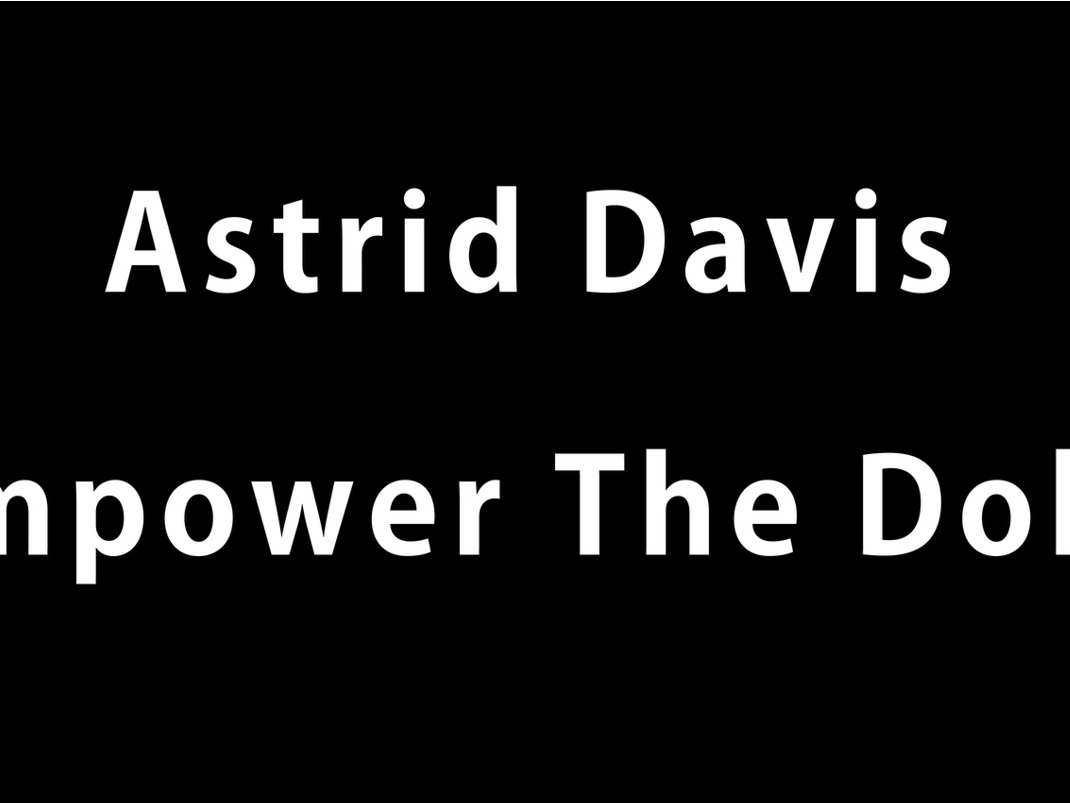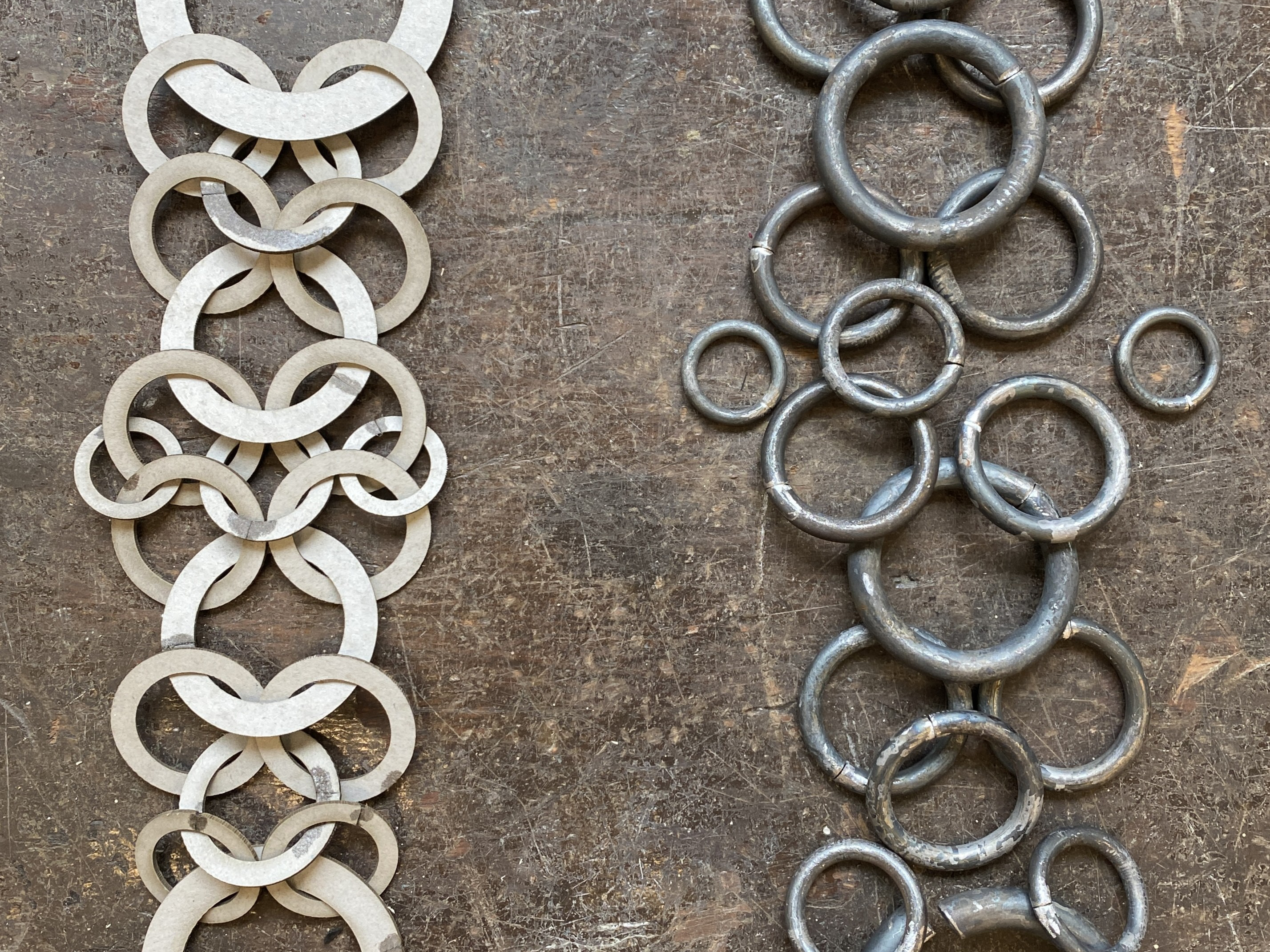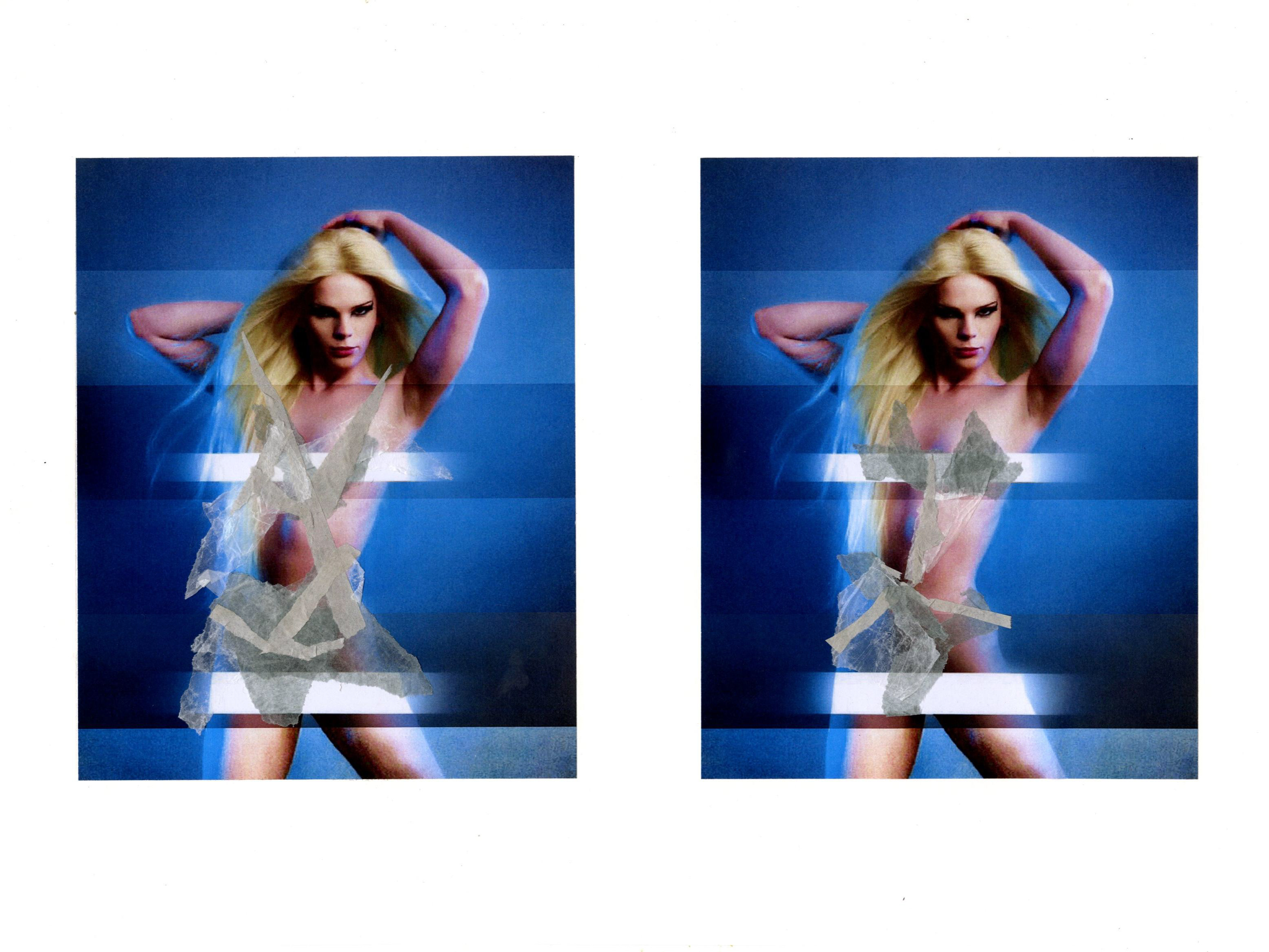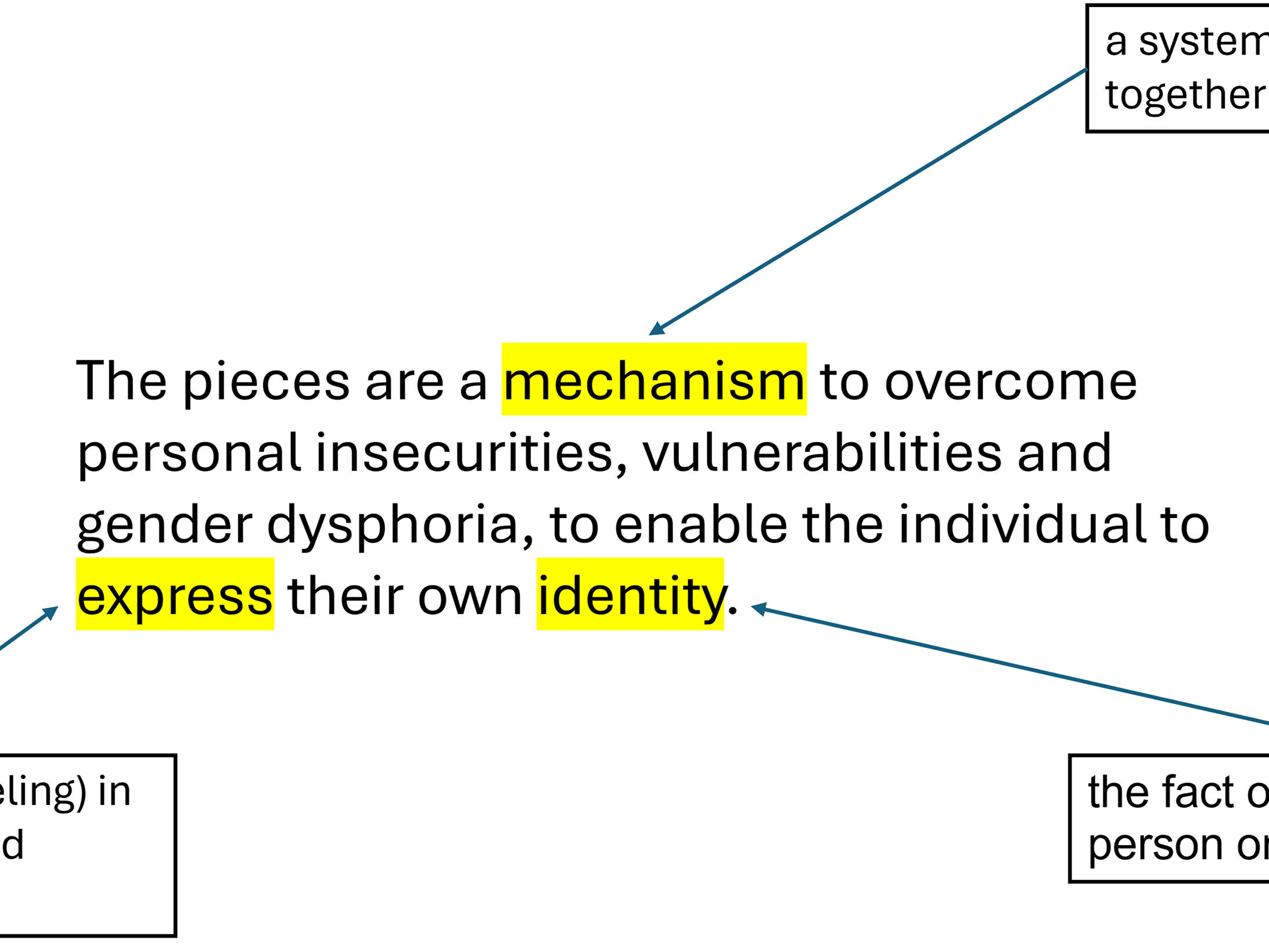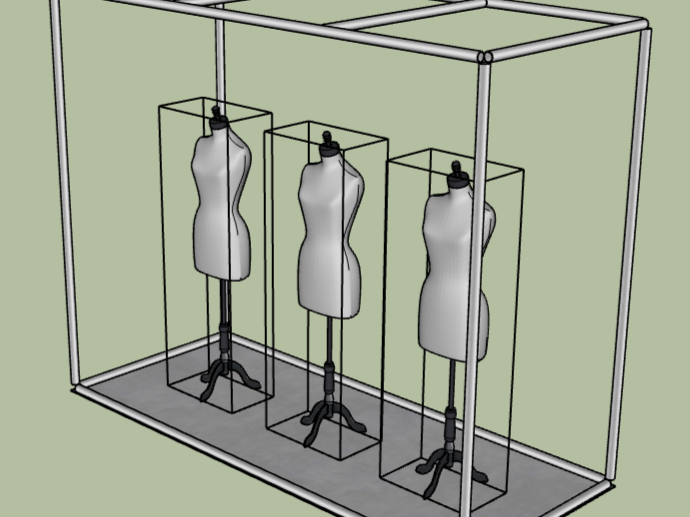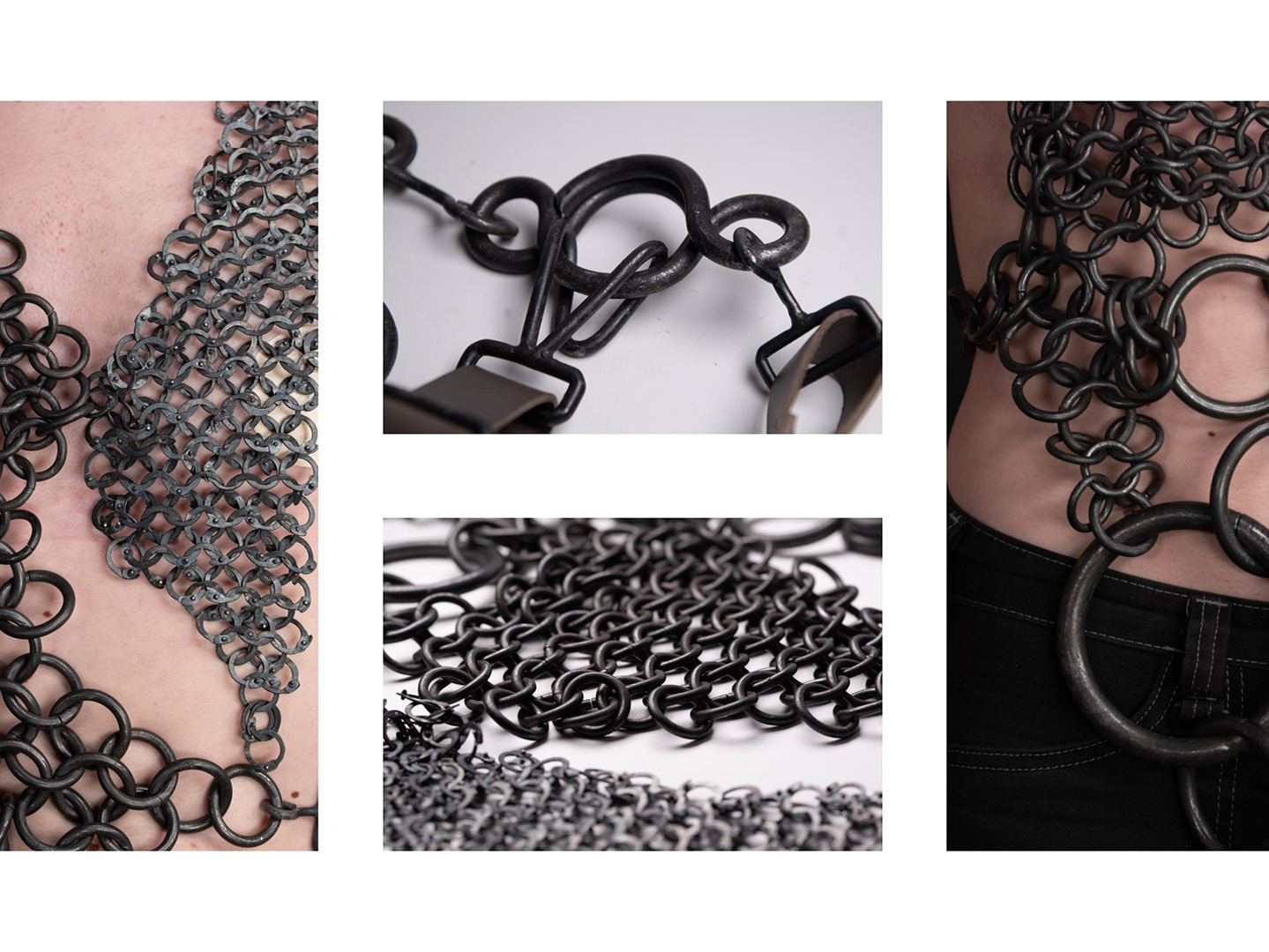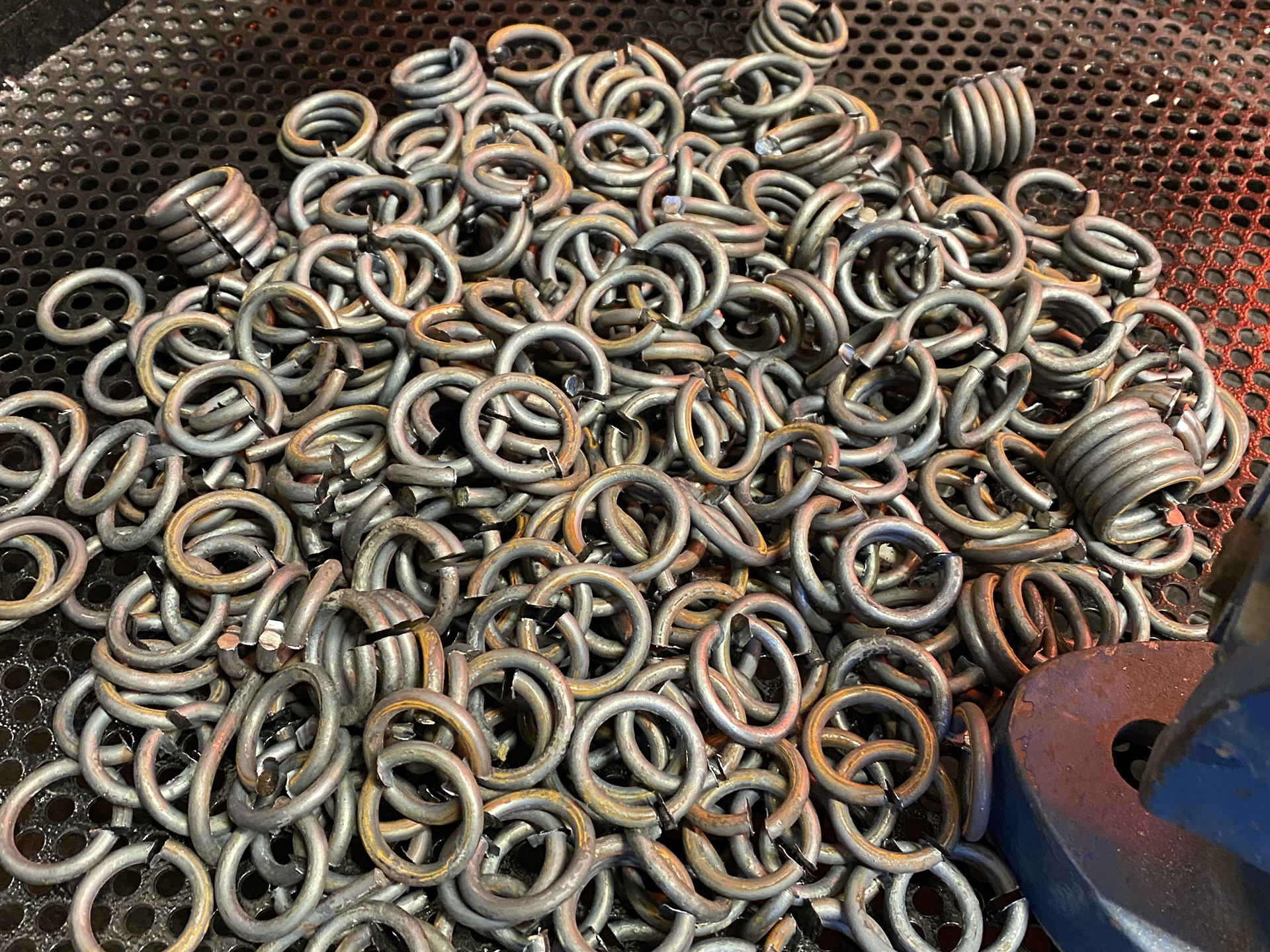Empower the Dolls
Artist statement:
My practice takes inspiration from medieval armour, investigating its protective qualities as both a means of concealment and empowerment for the transfeminine body. I worked alongside my community to create a collection that addresses specific insecurities and vulnerabilities expressed by individuals experiencing gender dysphoria. Each piece functions as a mechanism for overcoming these struggles, enabling the wearer to express their own identity. The interlocking patterns and sweeping forms create visual noise that distracts the viewer, pulling their attention toward the work and away from the body concealed beneath.
Each piece is hand-forged from mild steel and copper using traditional blacksmithing techniques. The strength and weight of the steel enhance the presentation of protection. This labour-intensive and time-consuming process also serves as a way to confront and process my own gender dysphoria. The act of making provides a grounding escape from these struggles, allowing me to channel my emotions into the material.
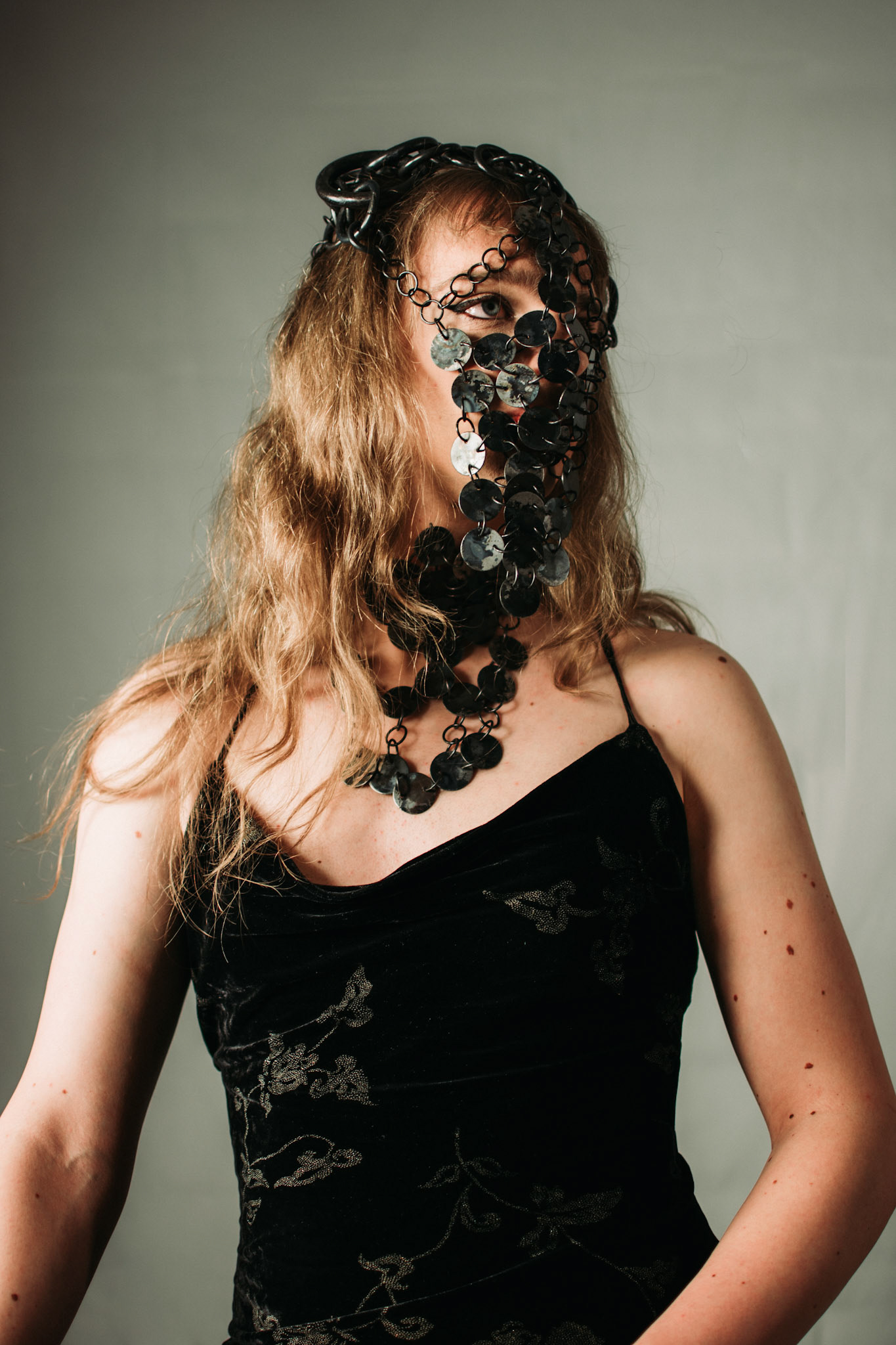
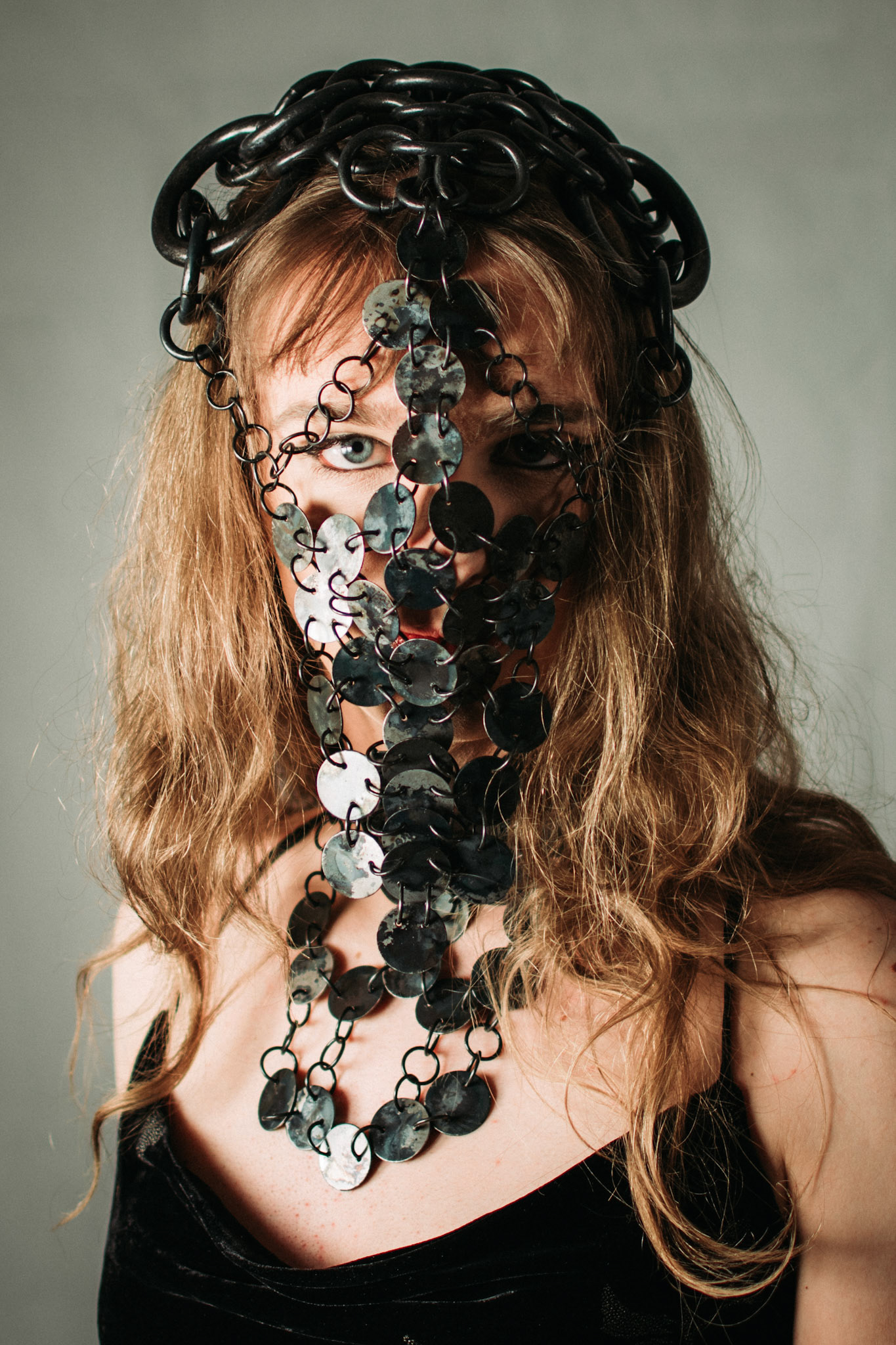
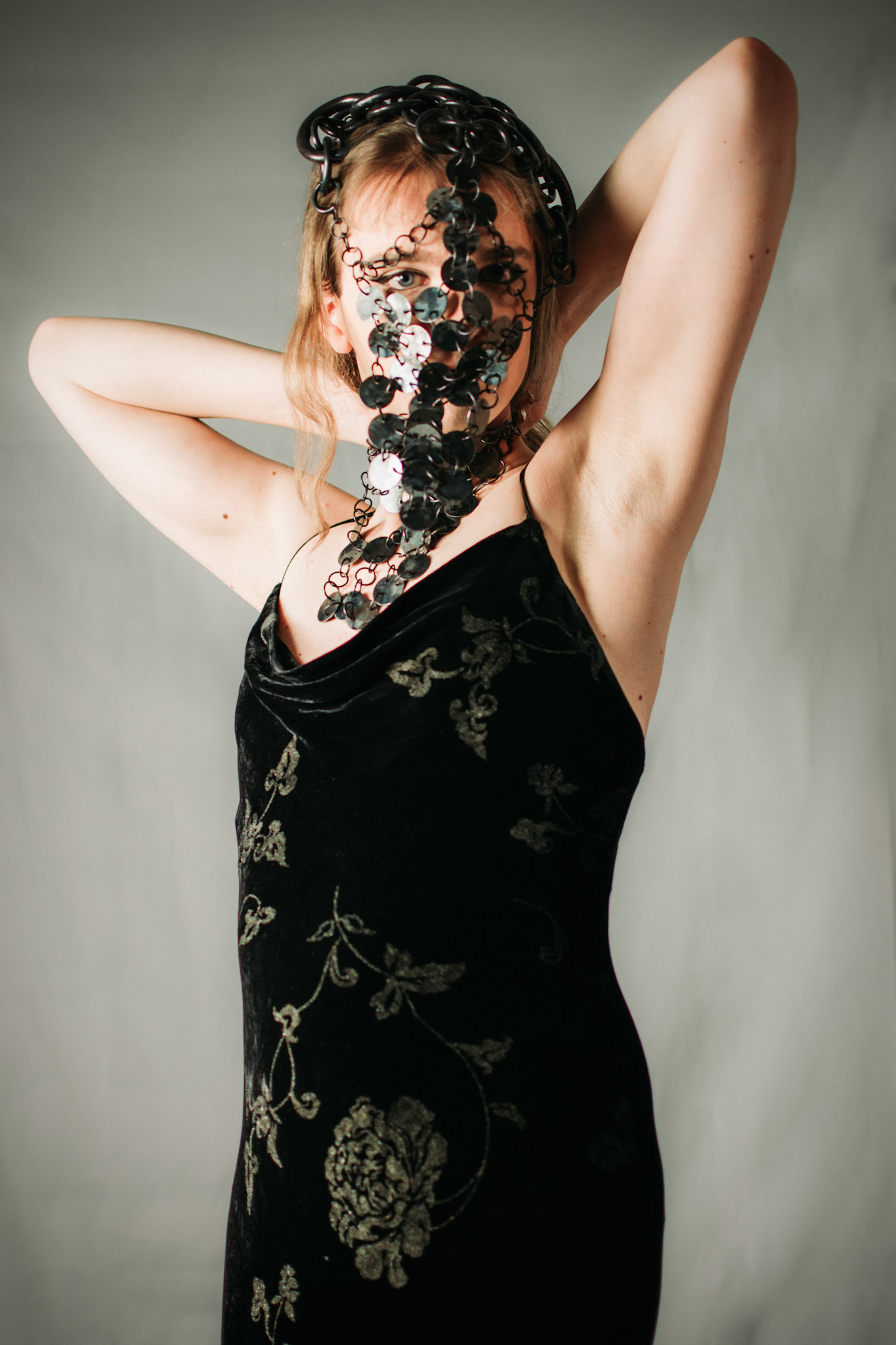
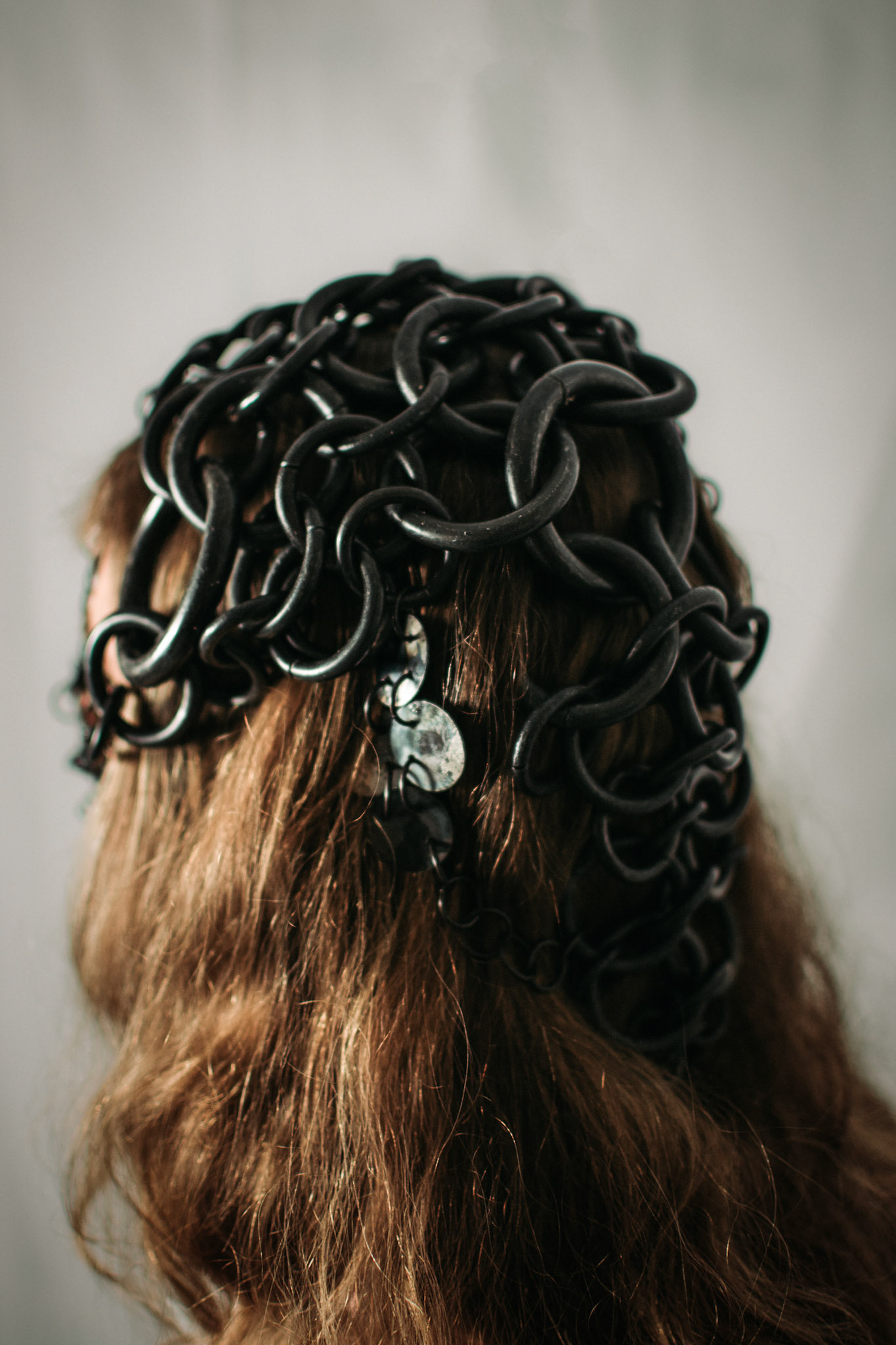
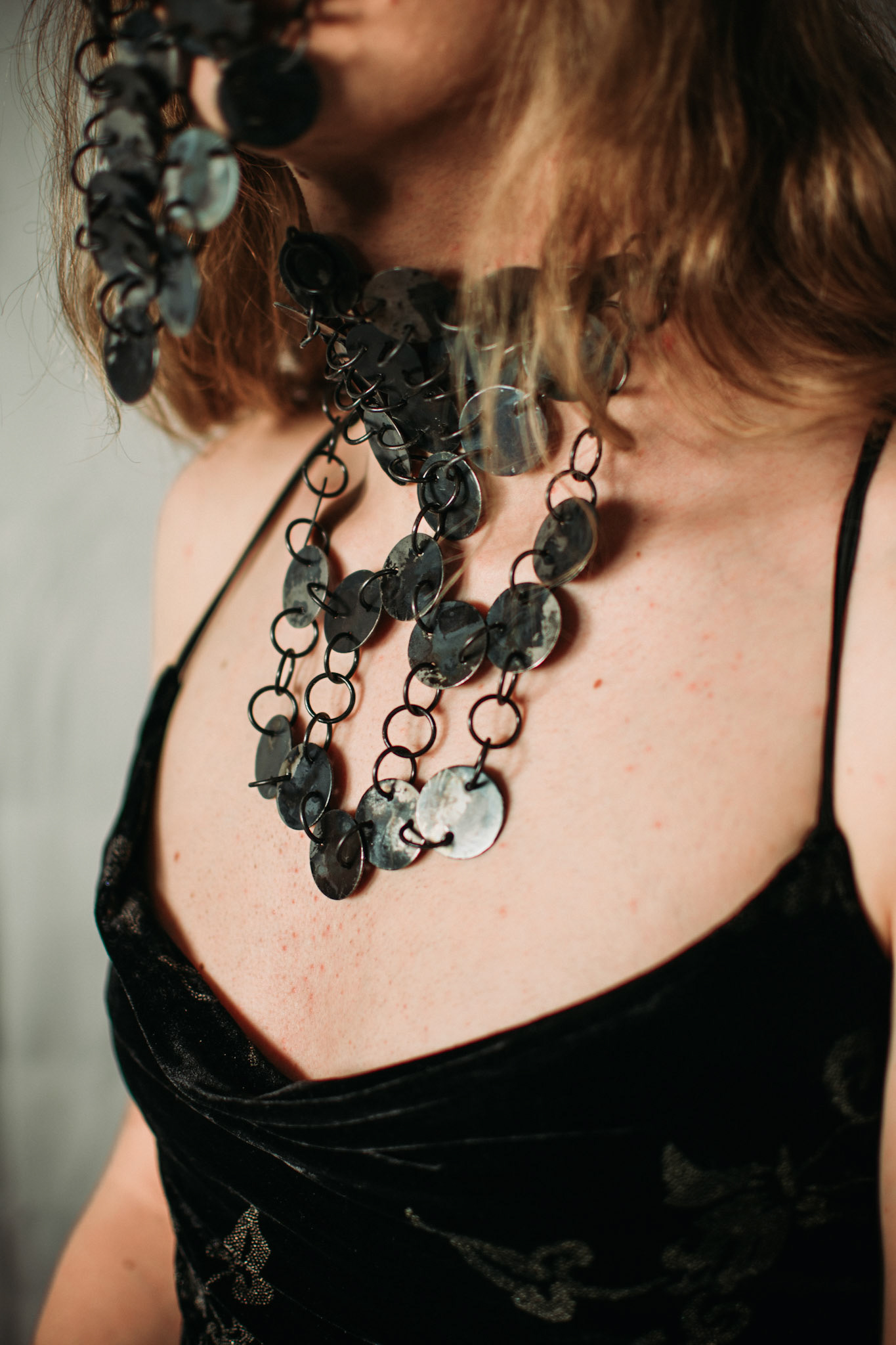
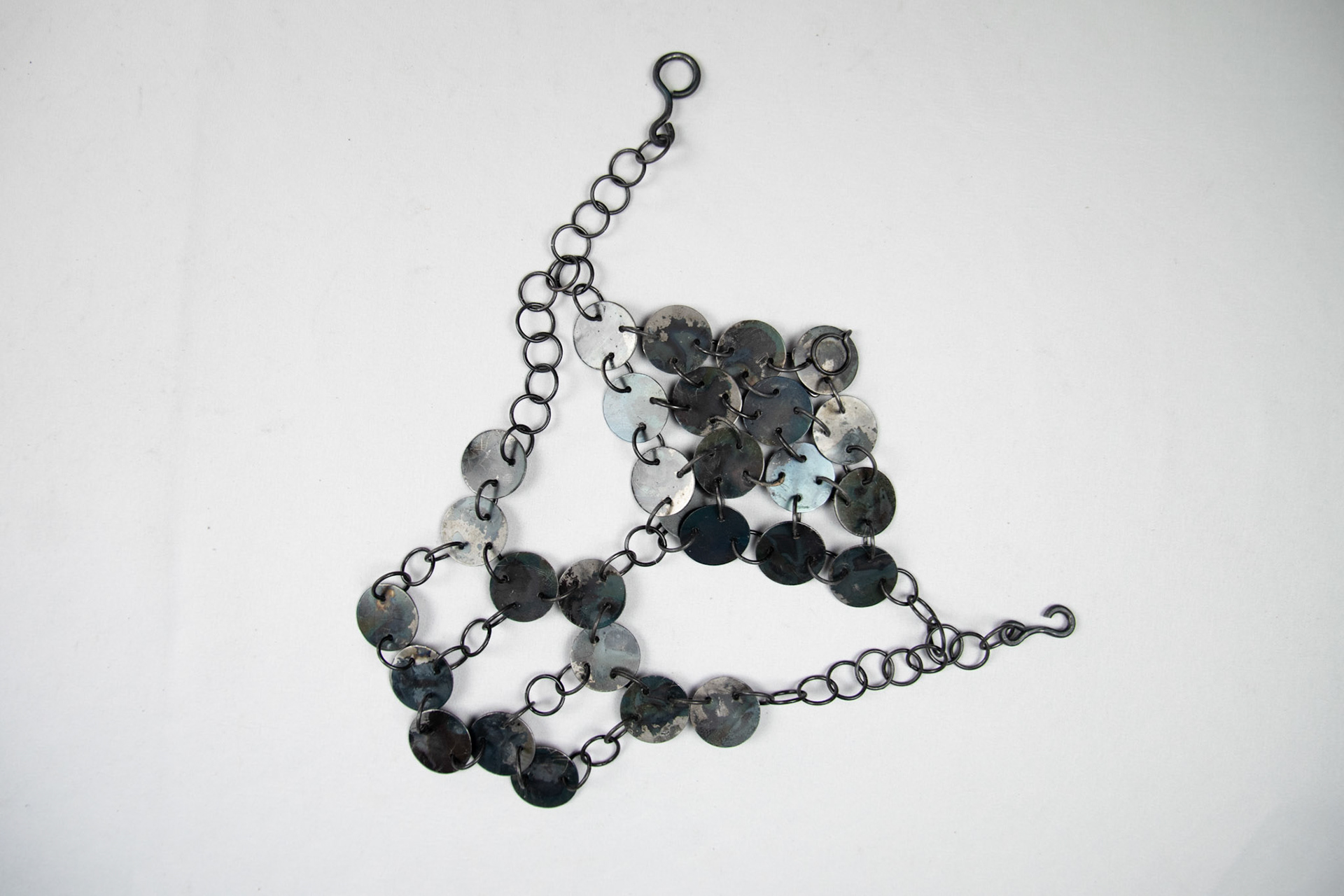


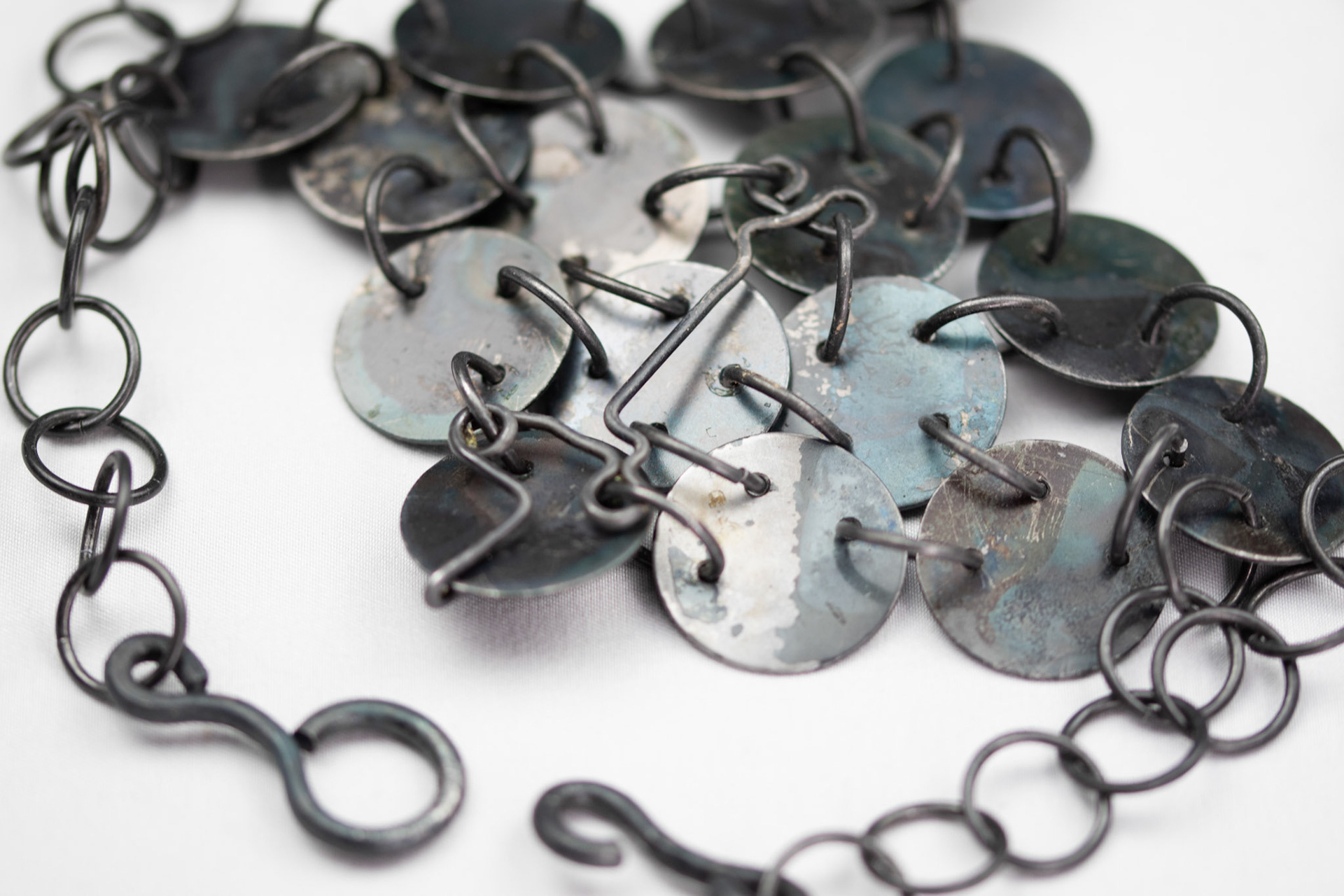
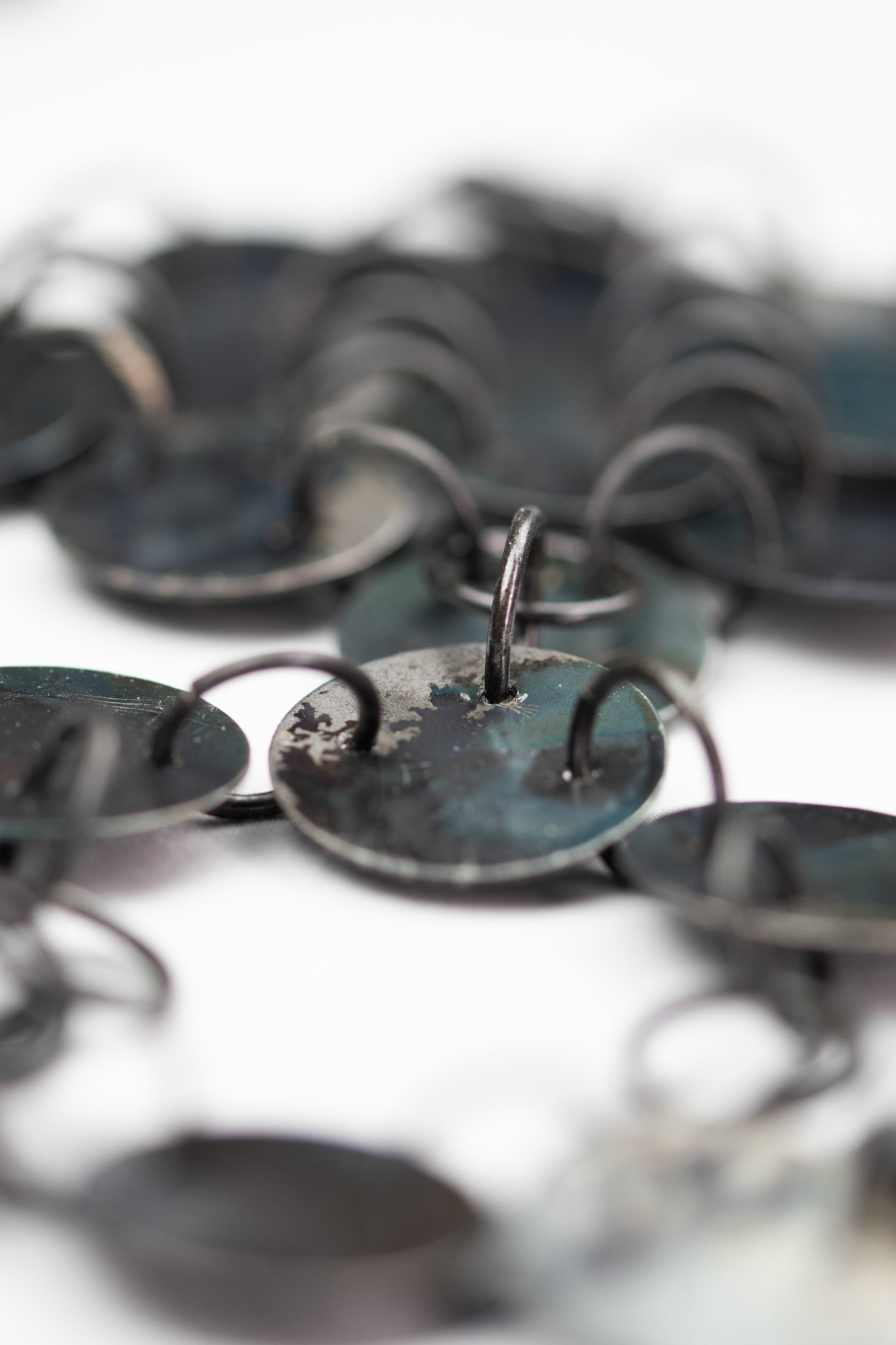
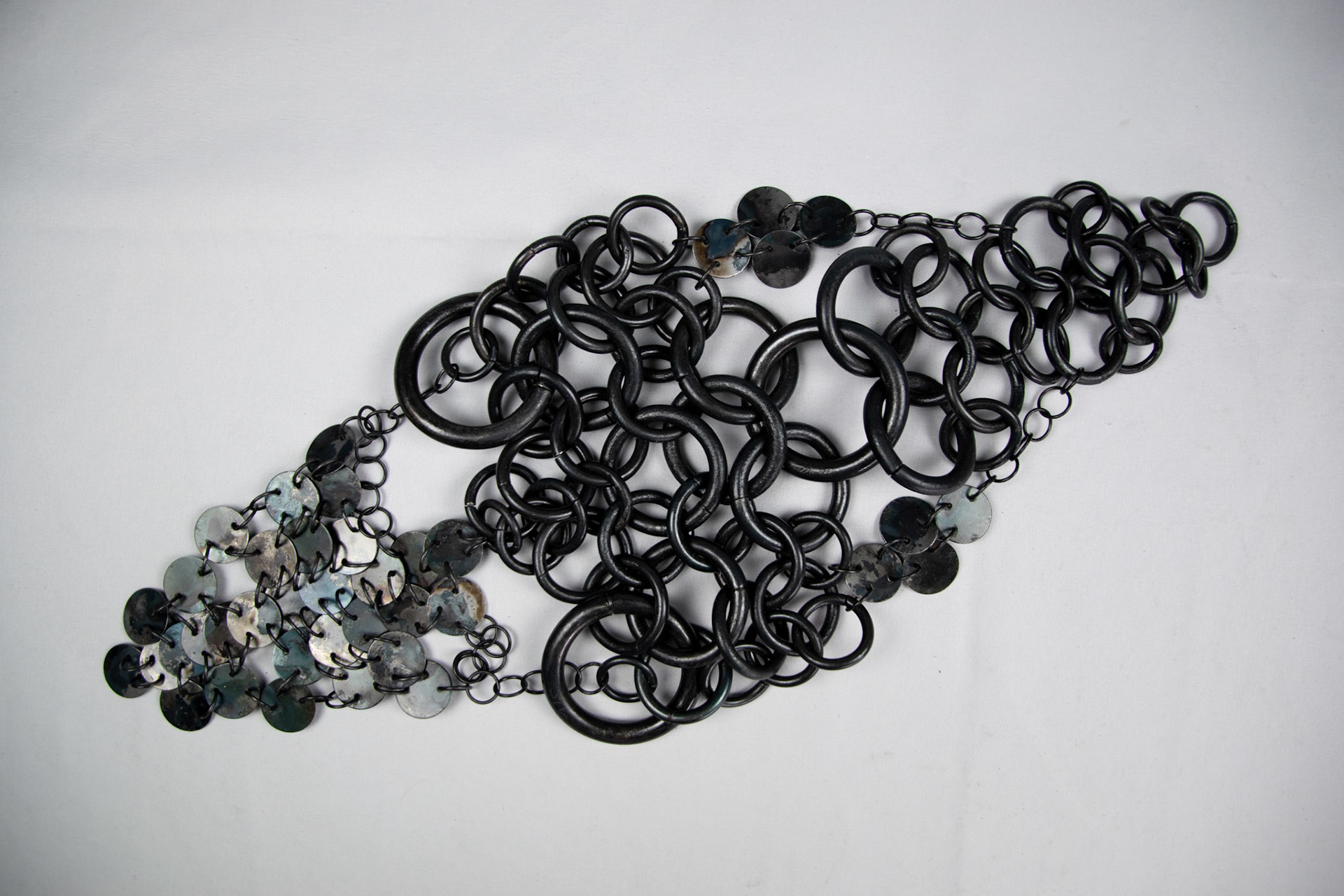




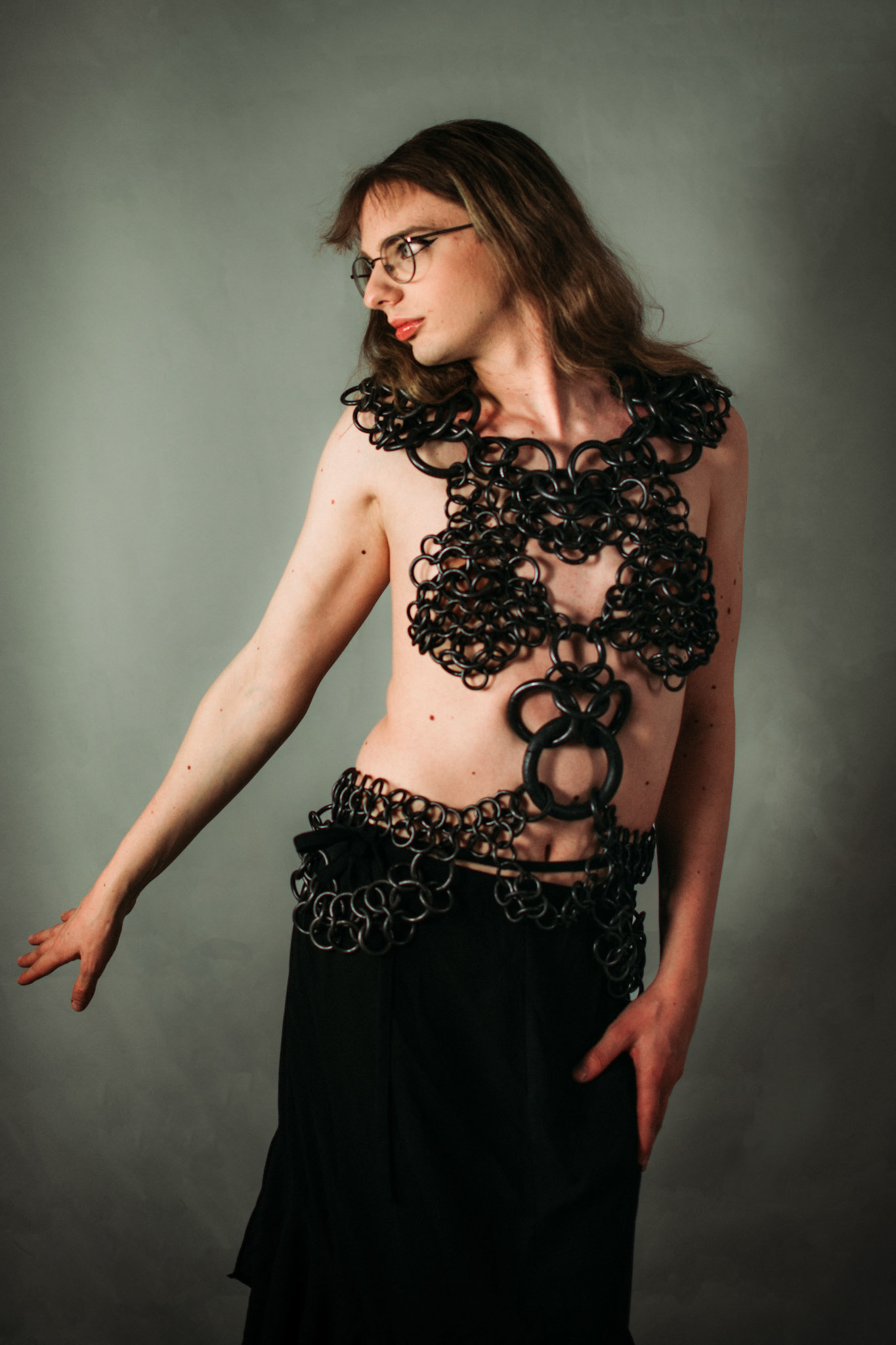
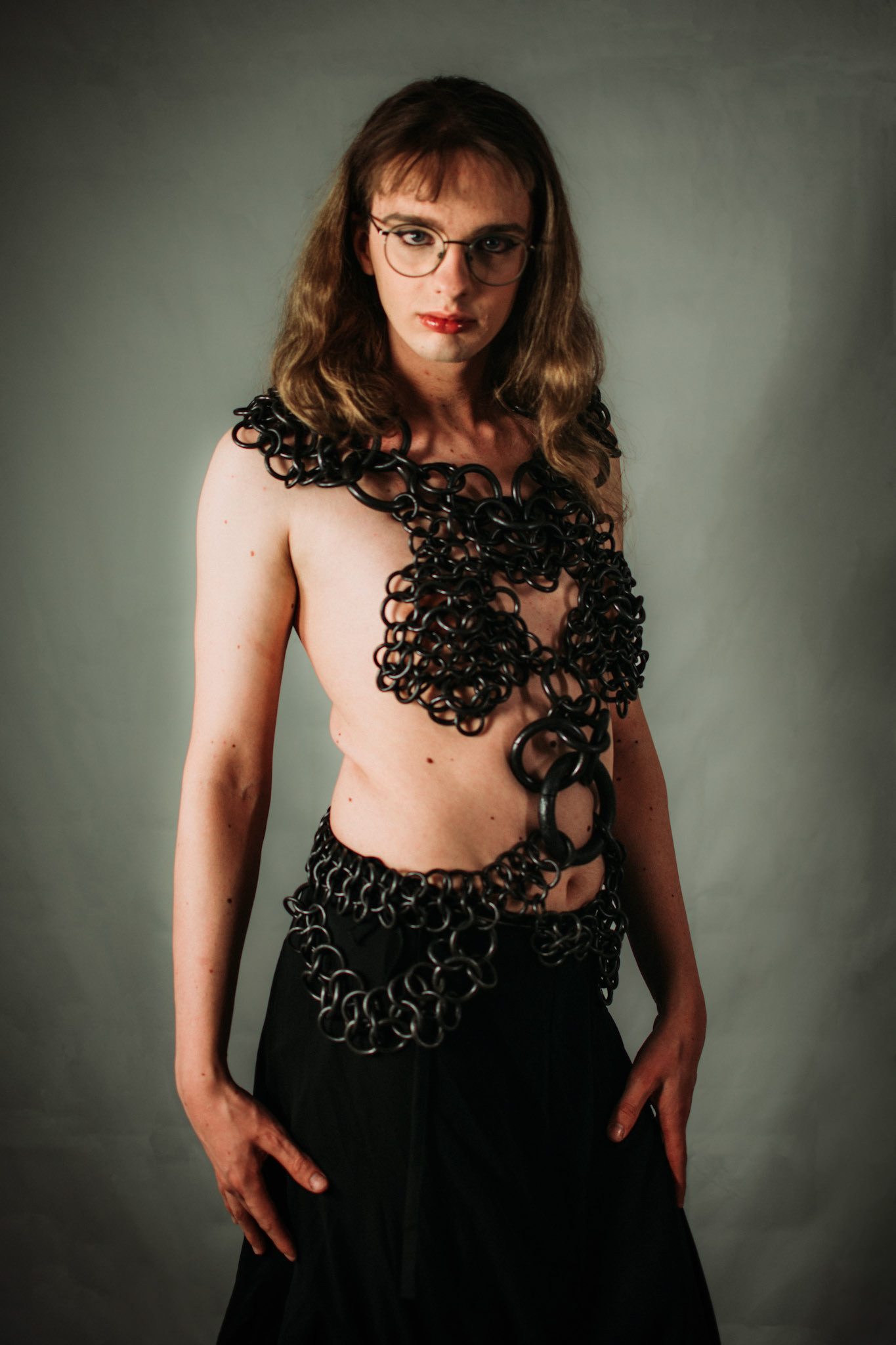
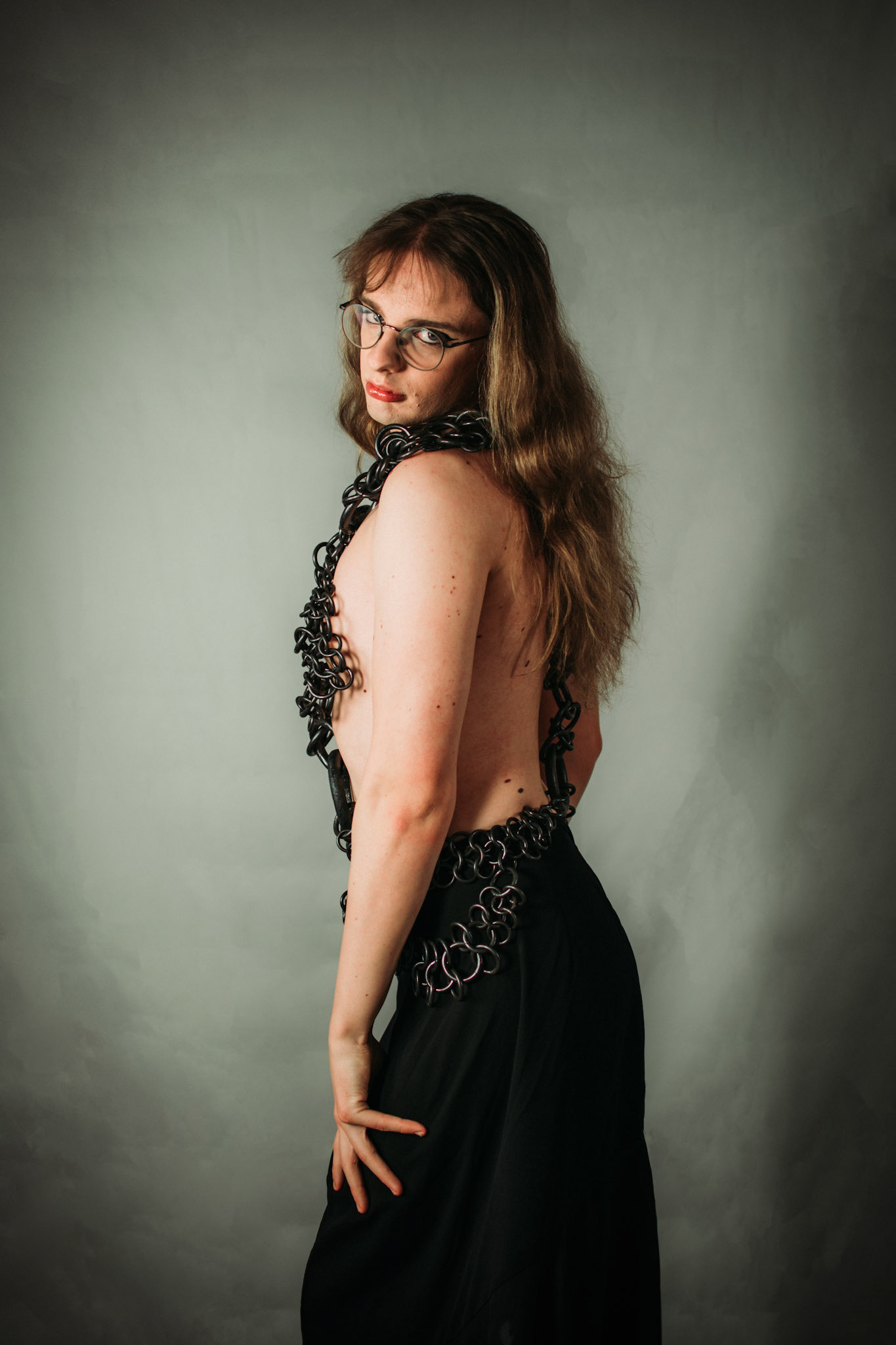
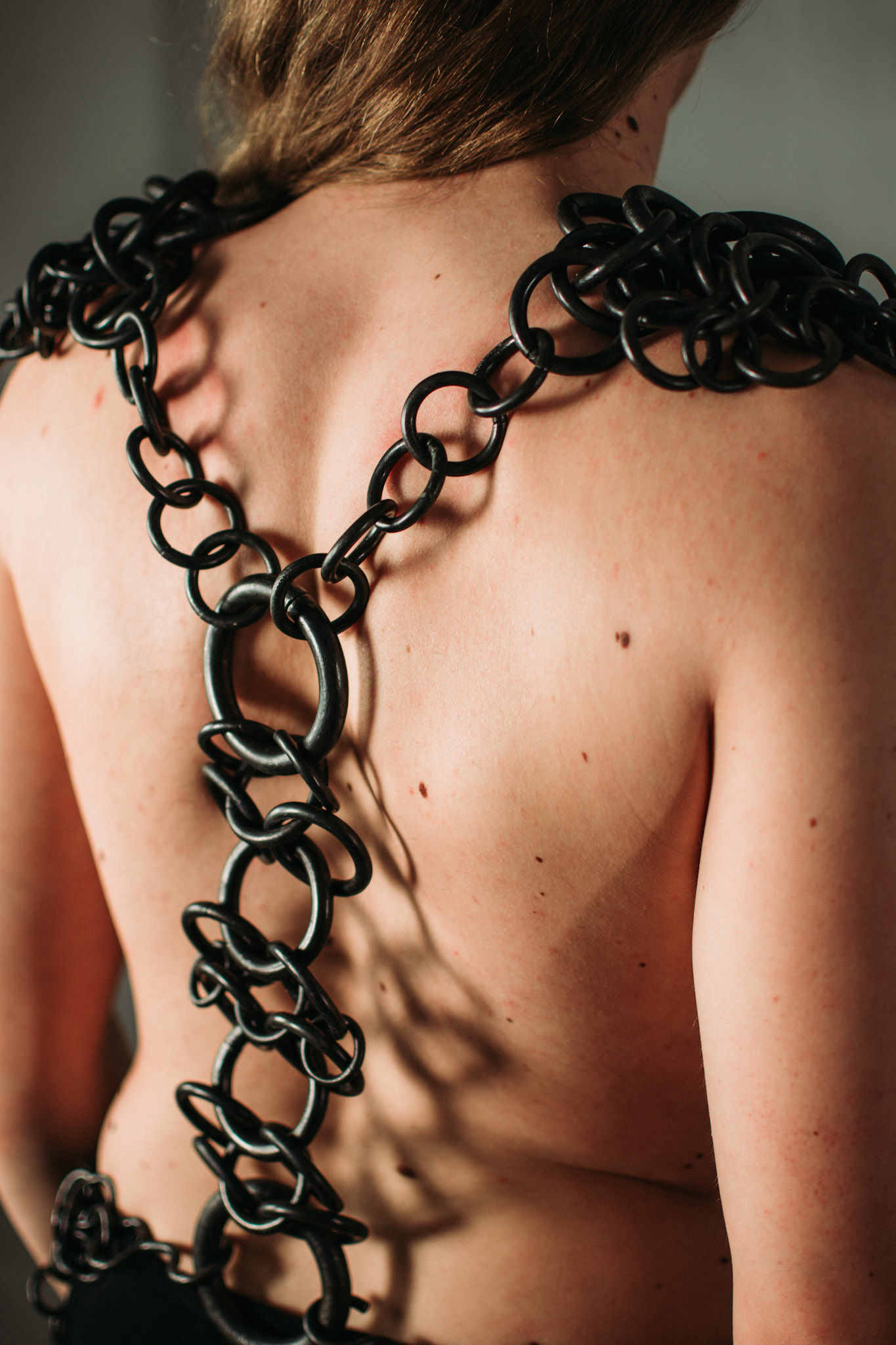

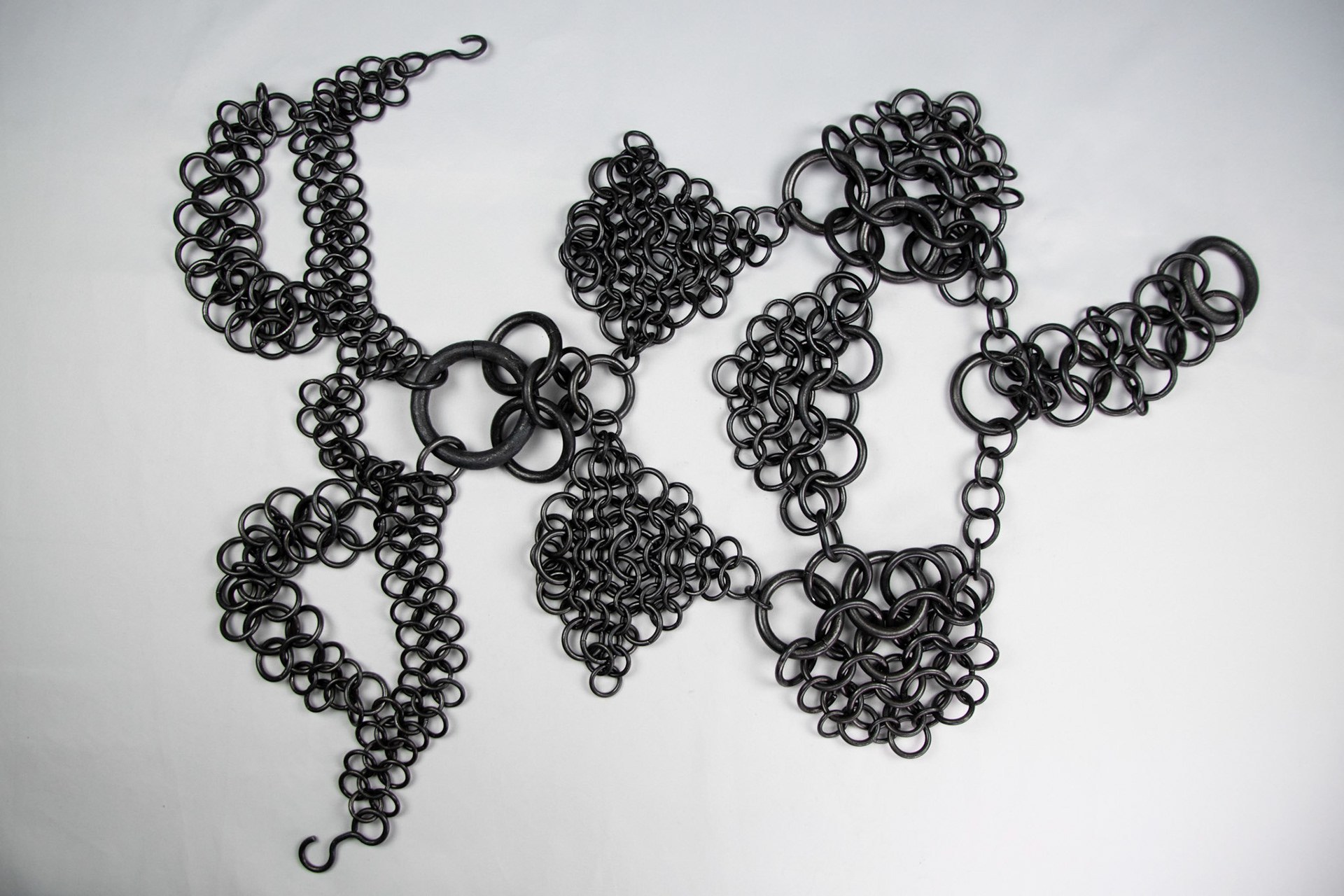

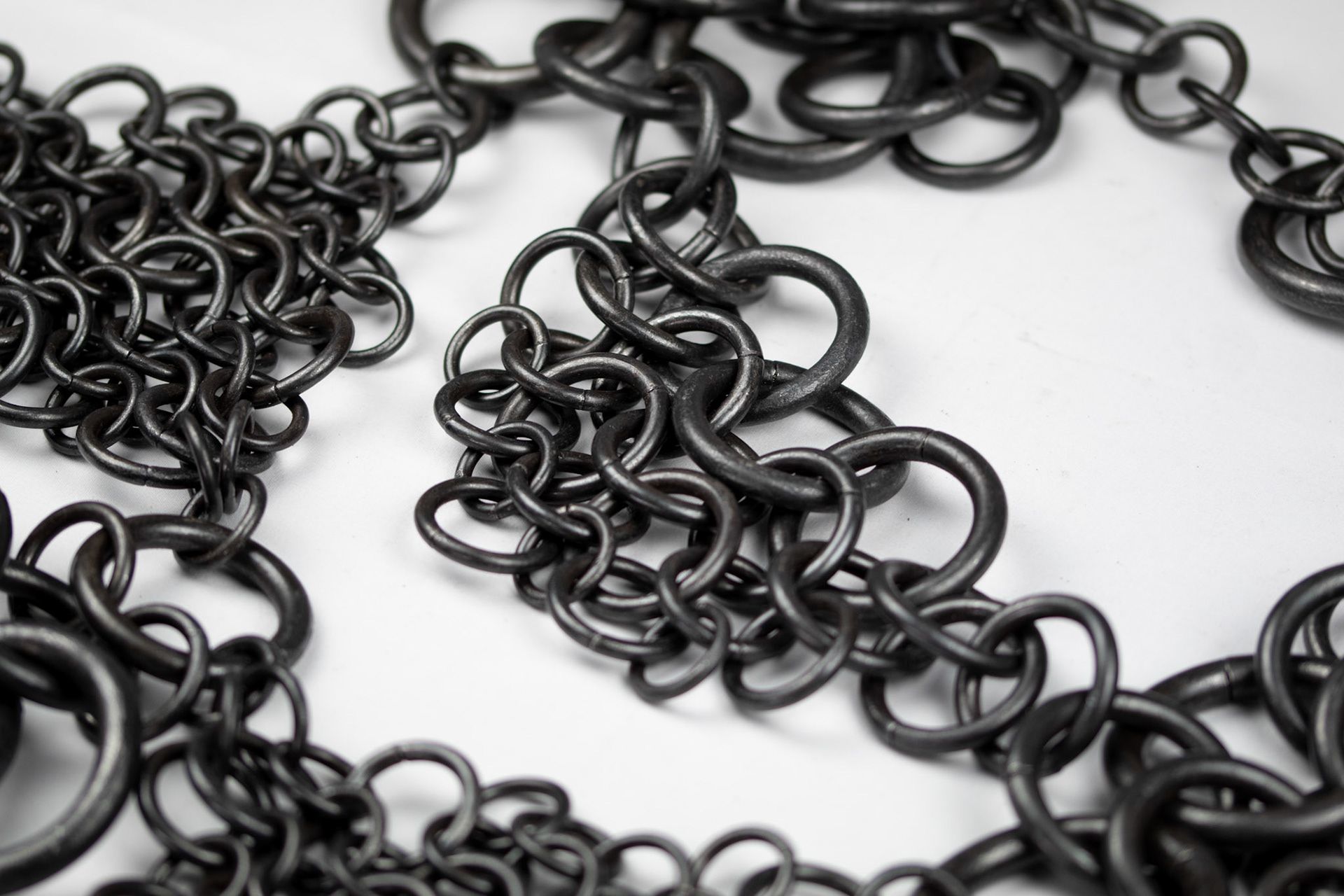

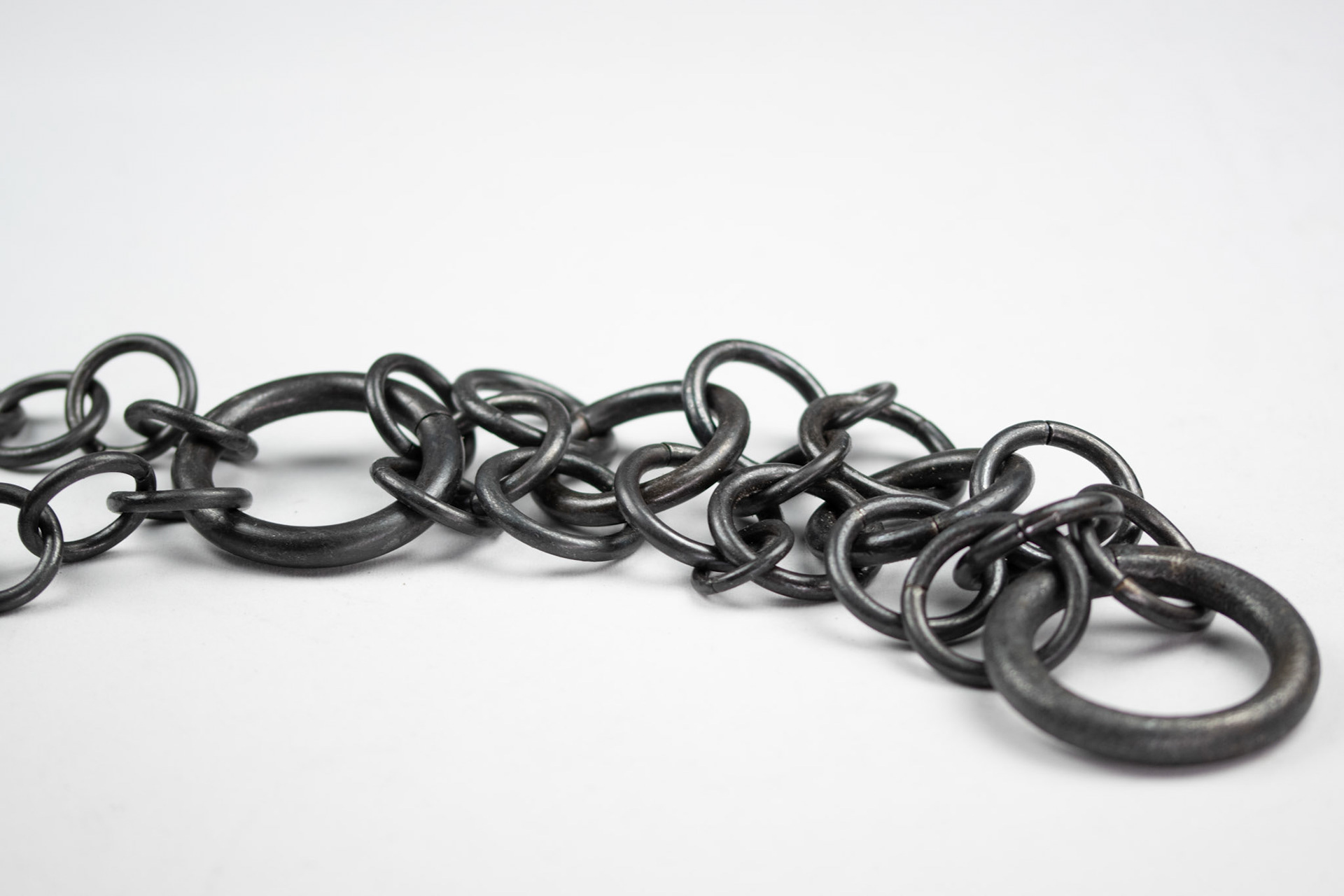
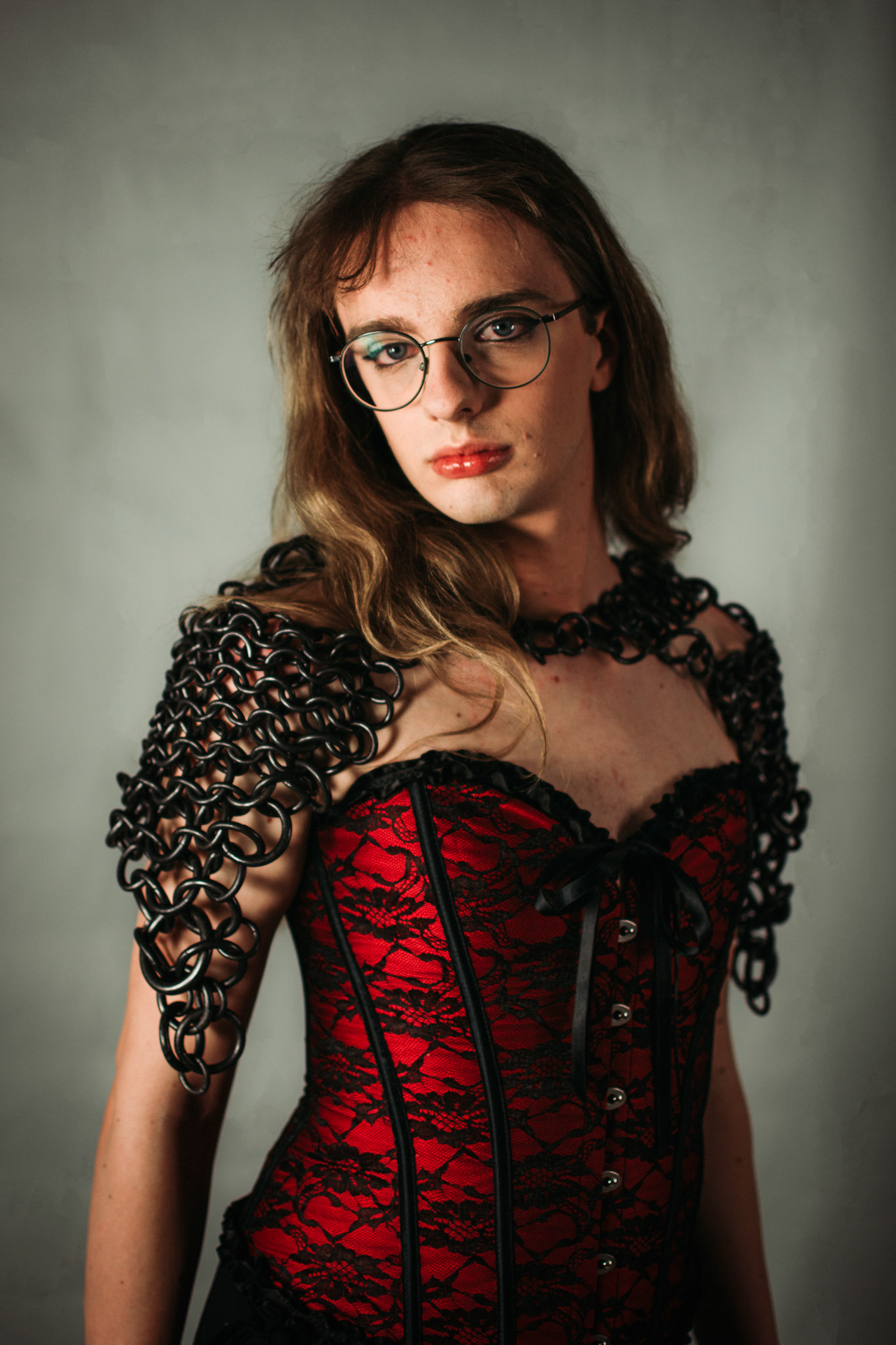
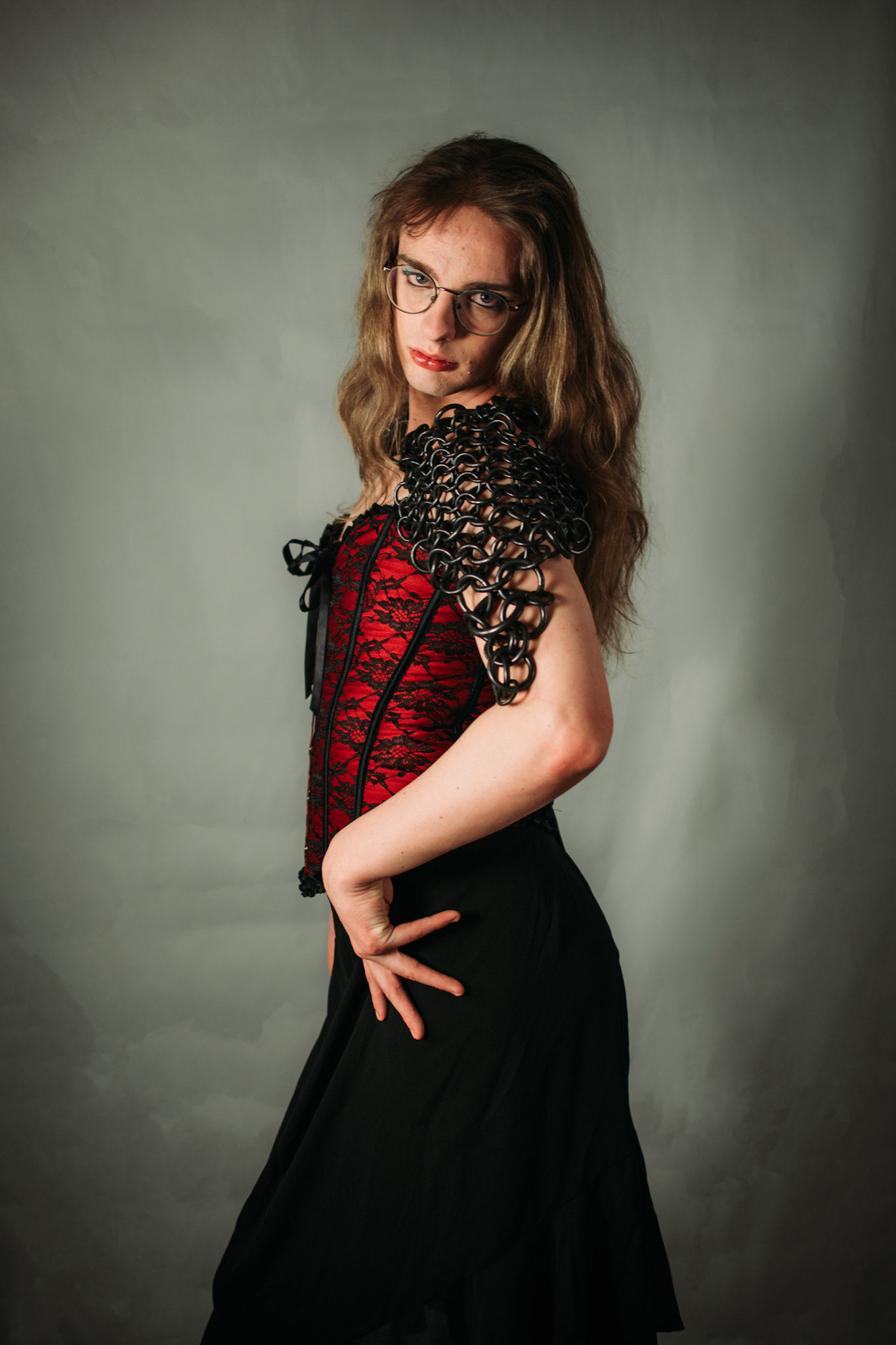

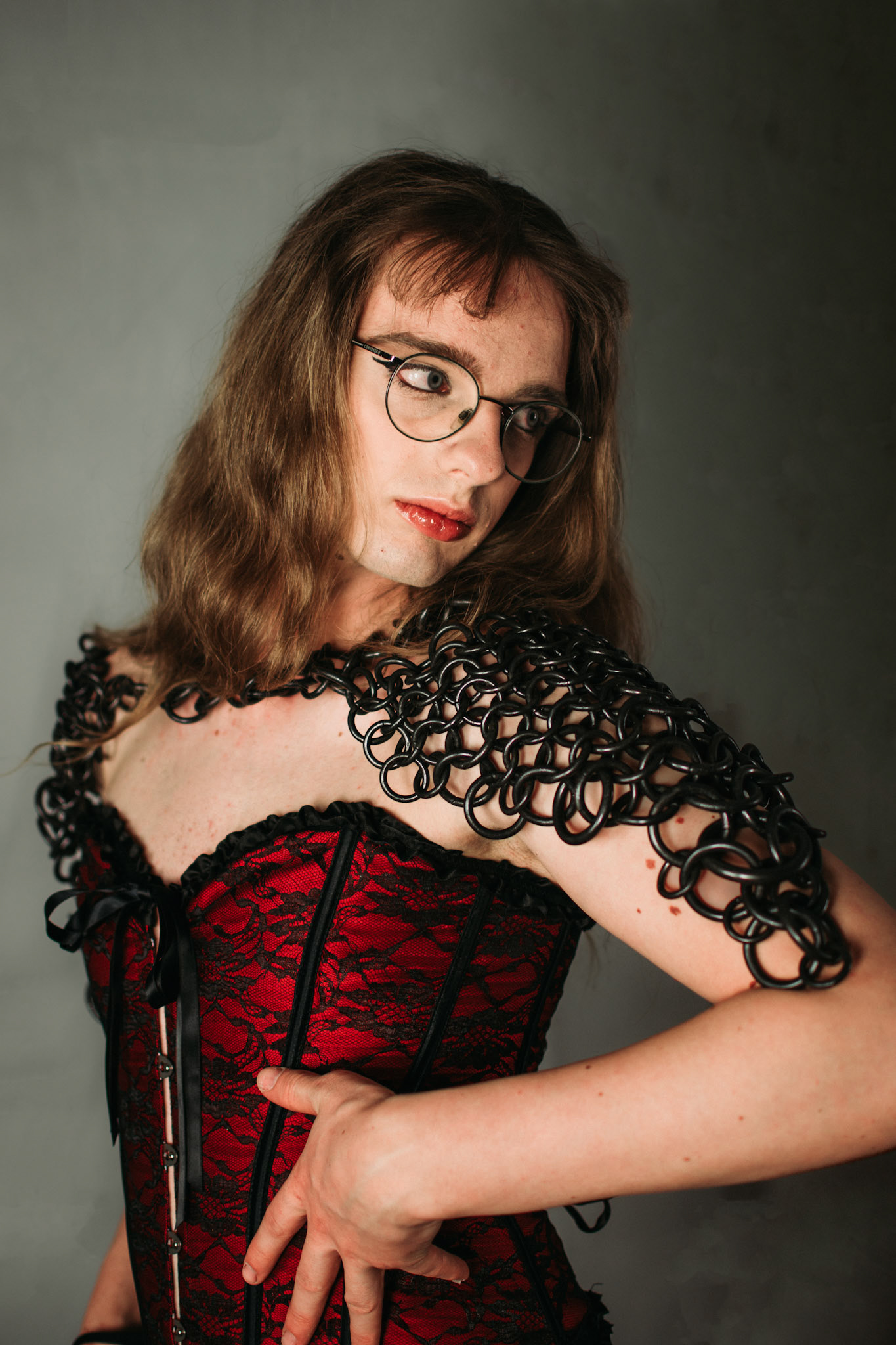
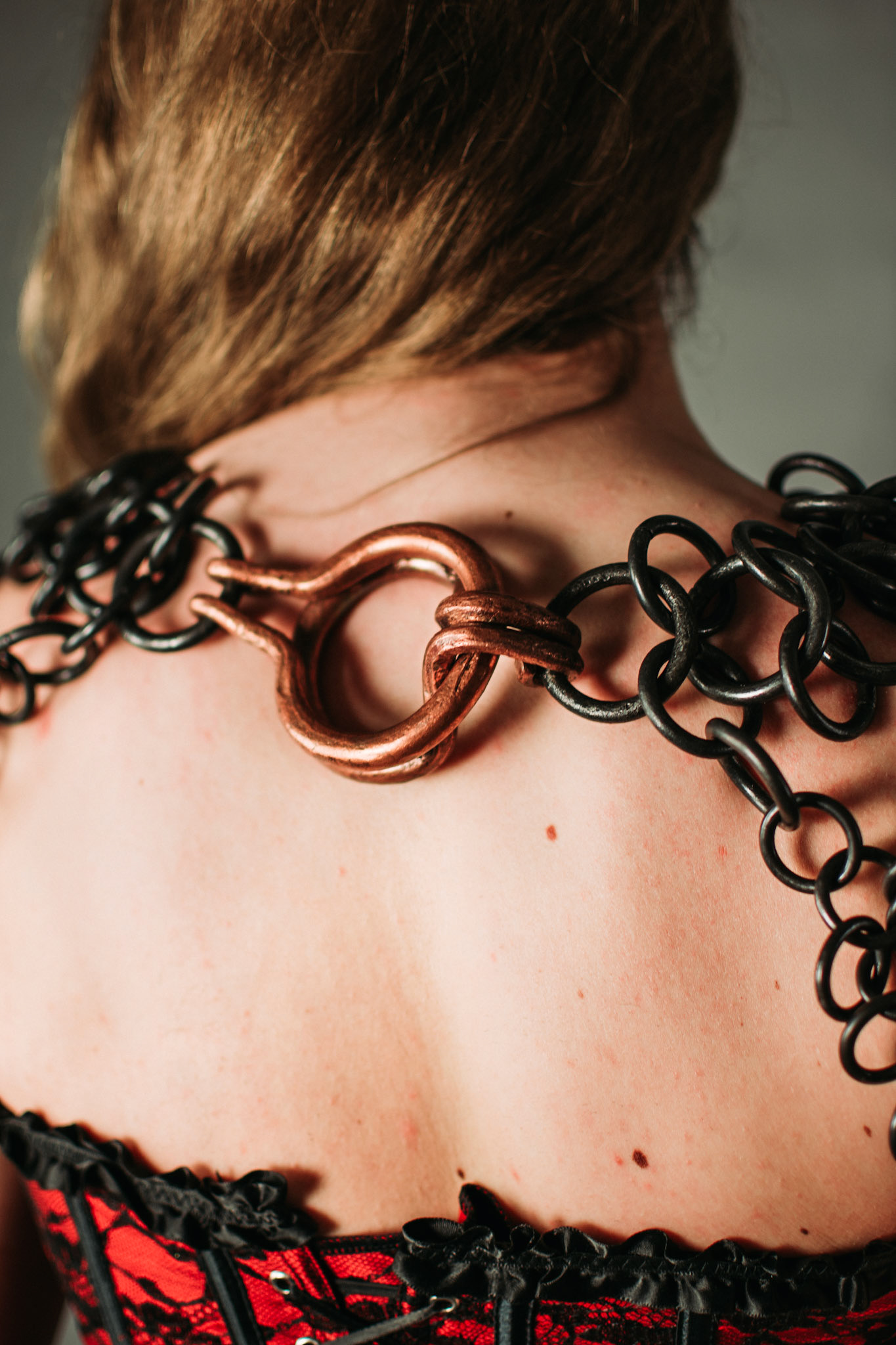
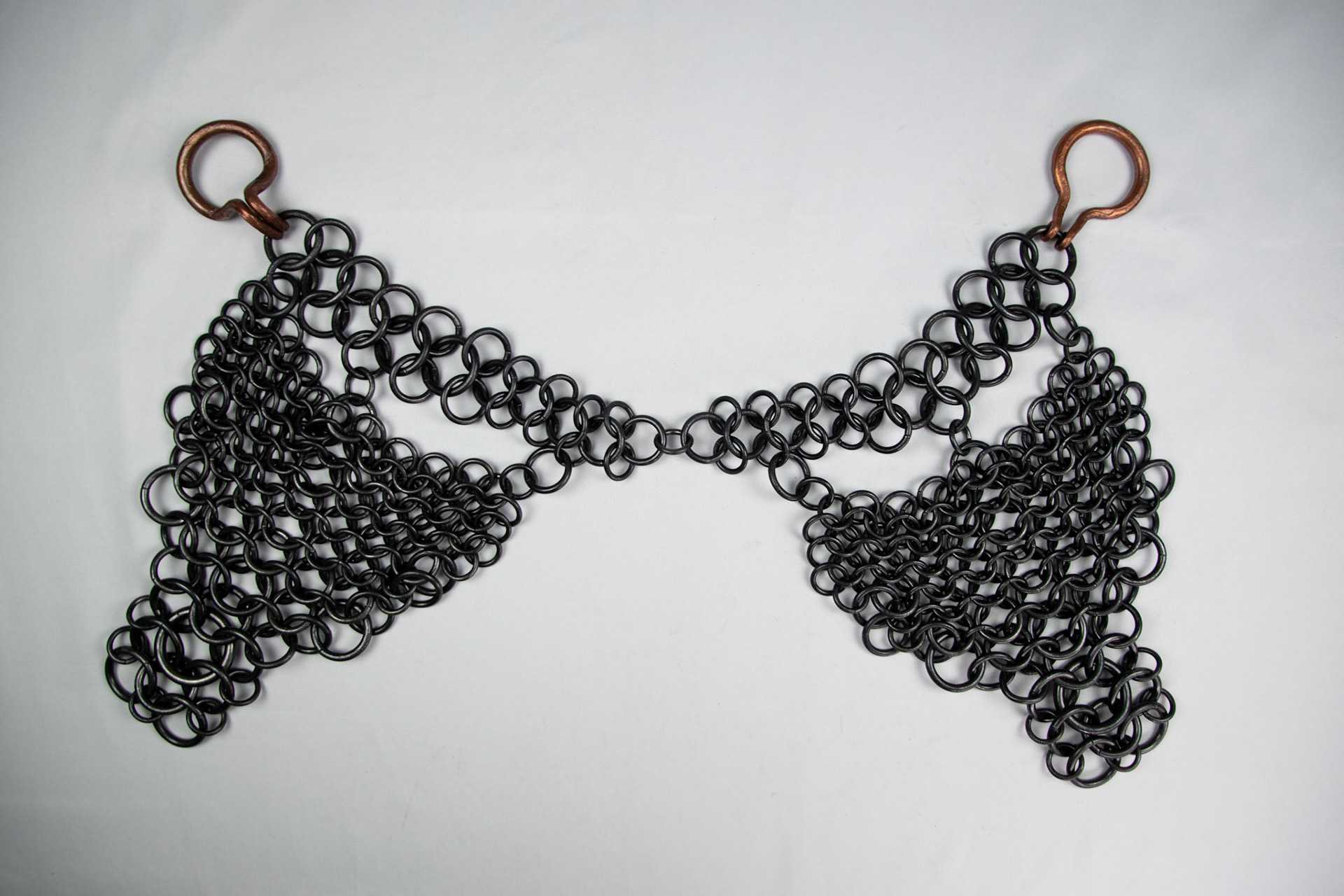


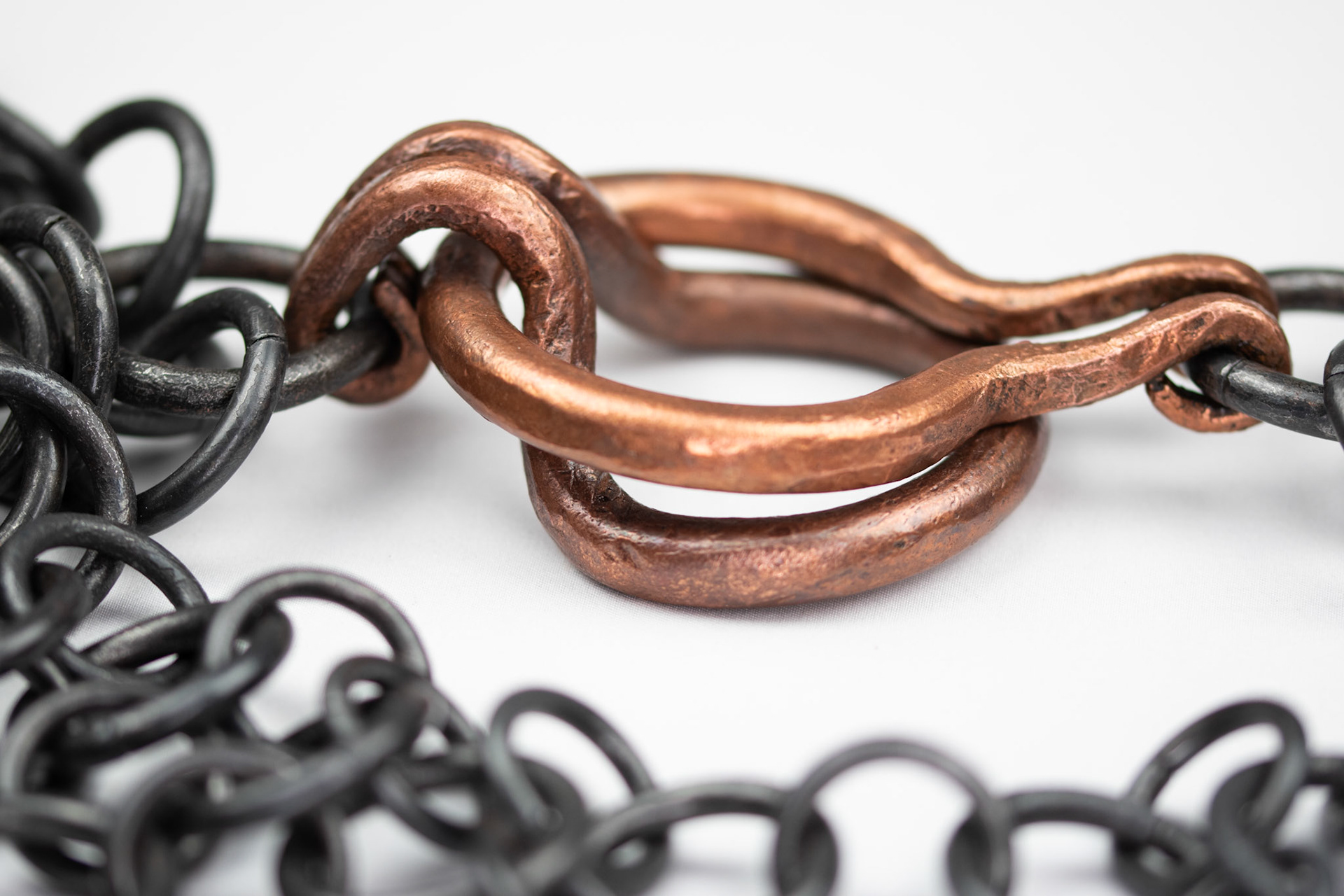
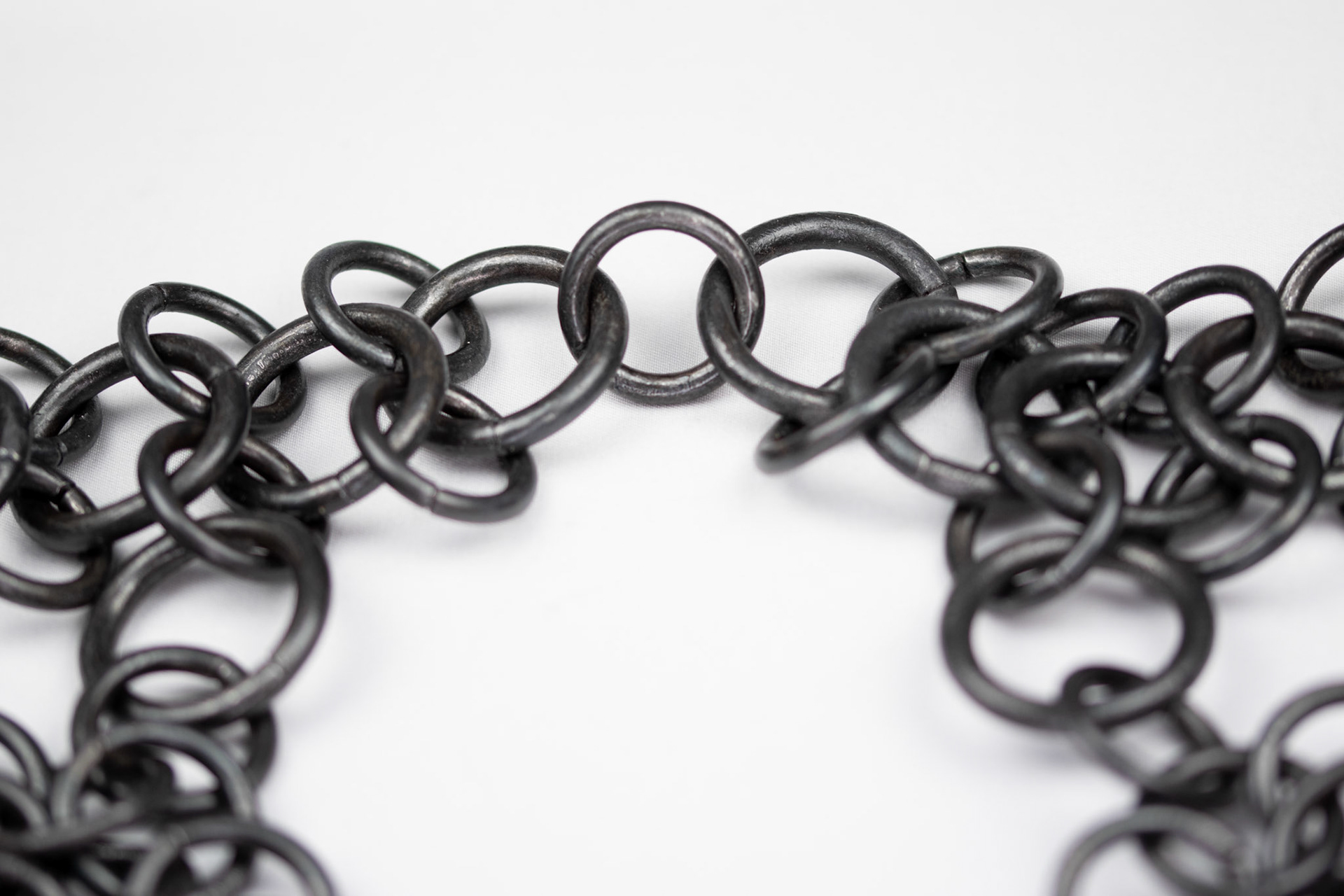
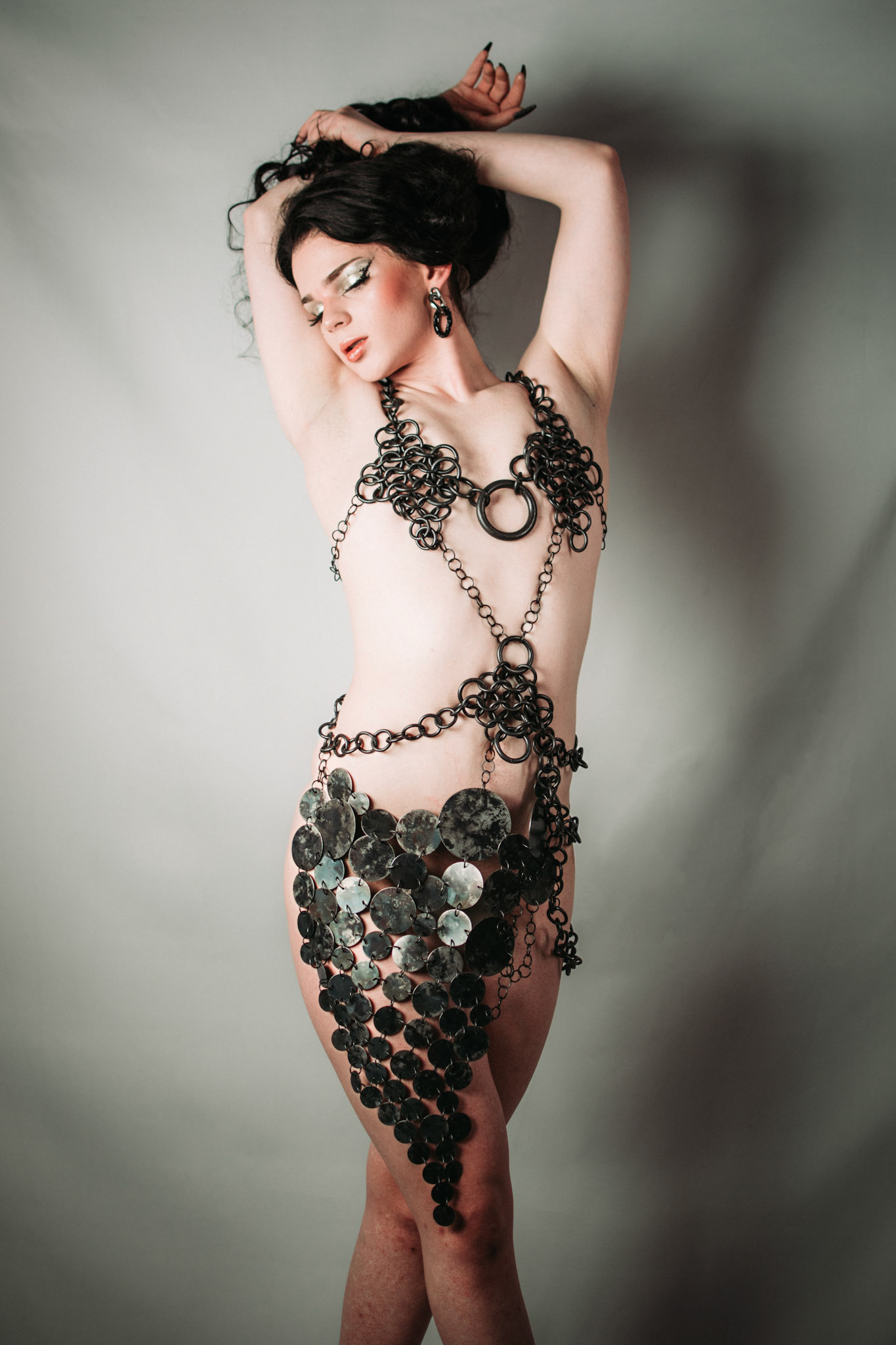
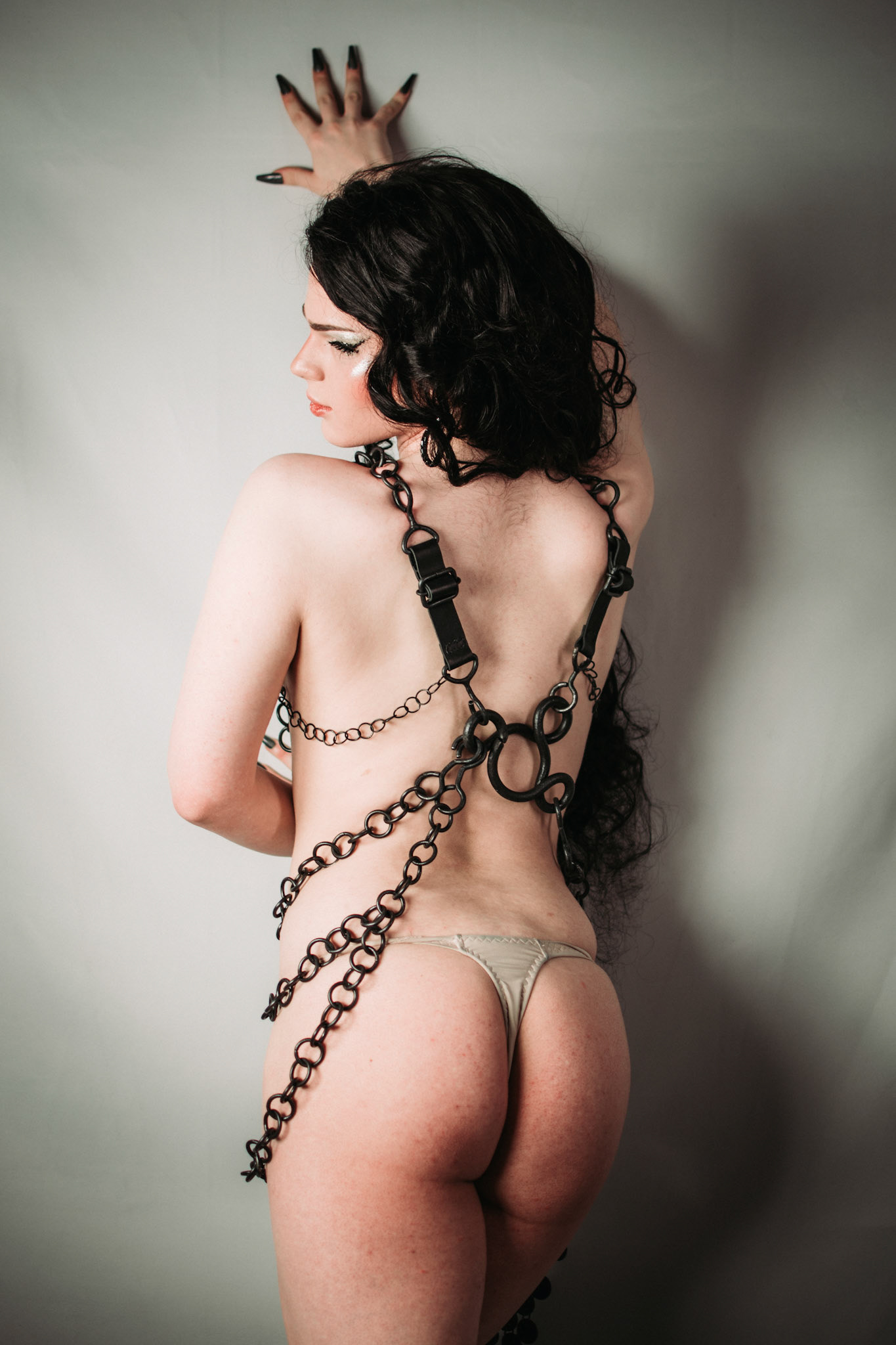

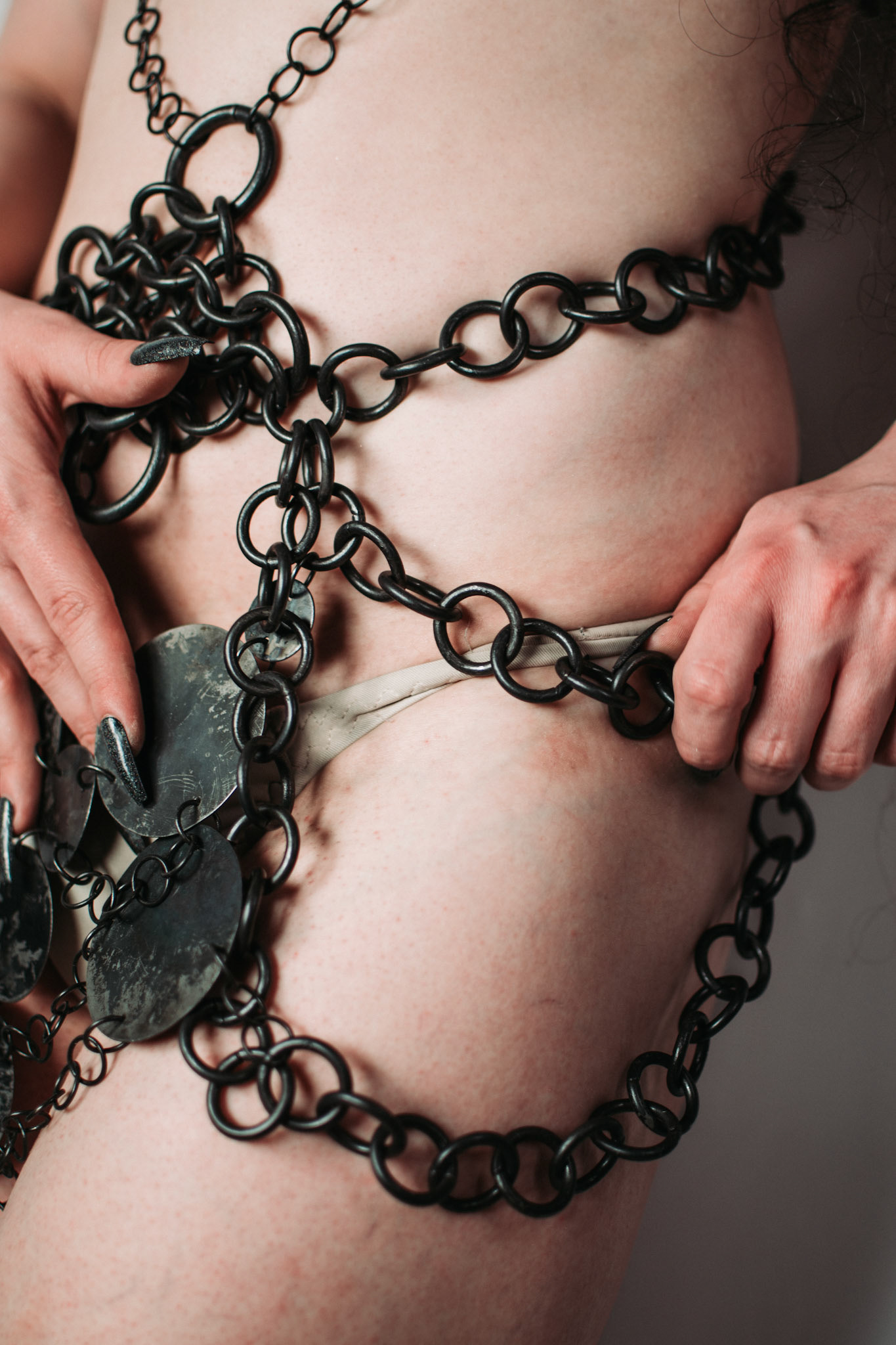
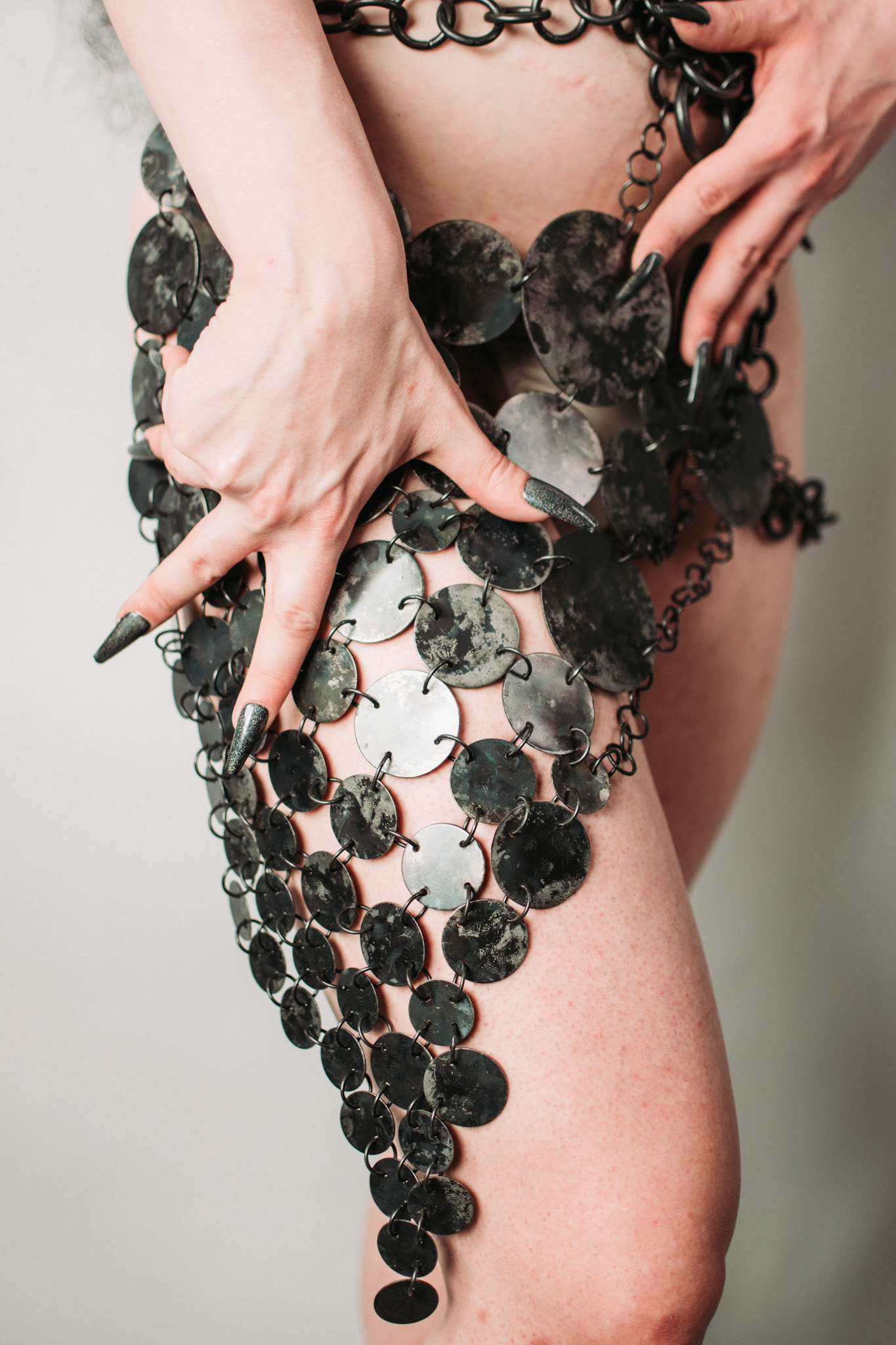

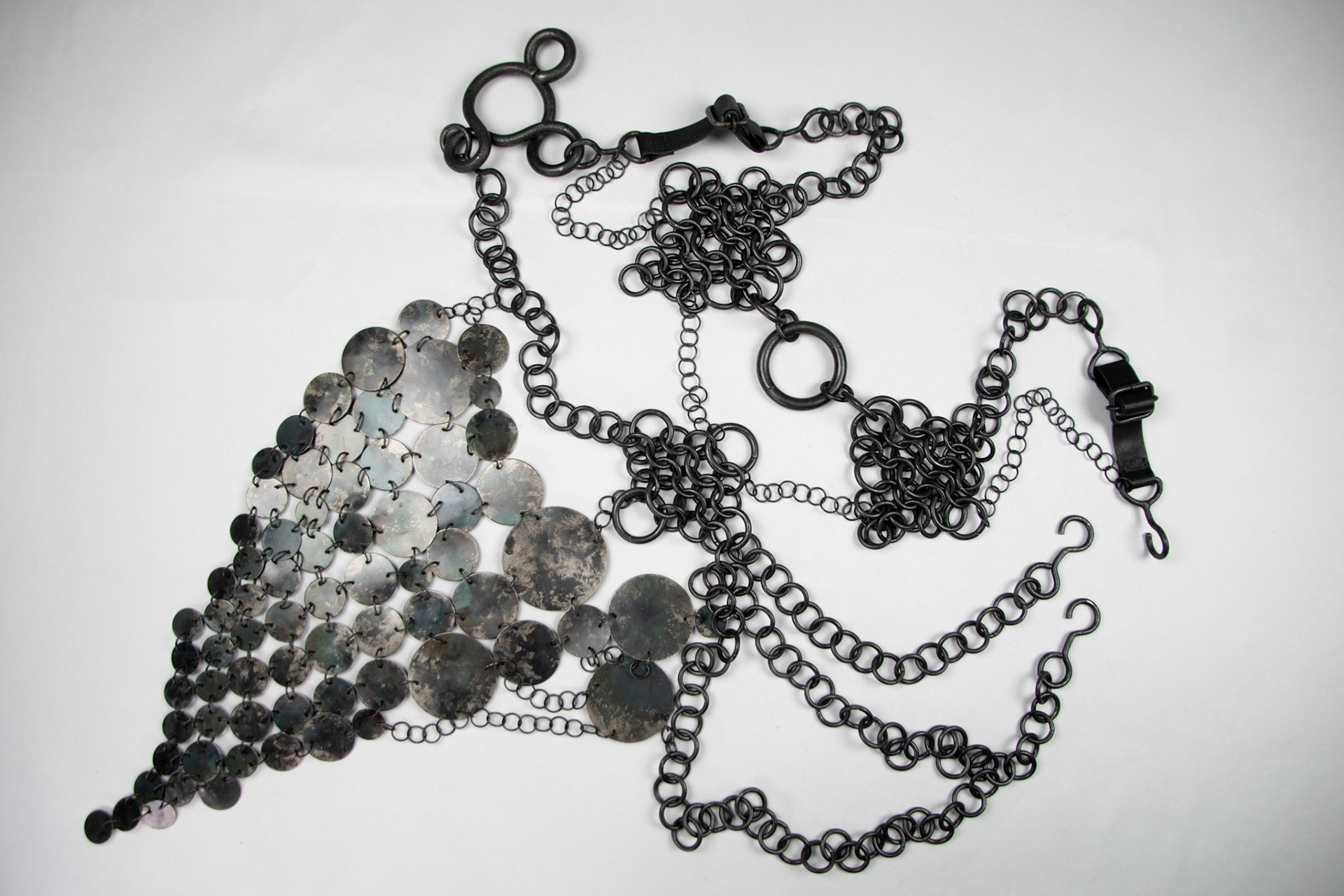

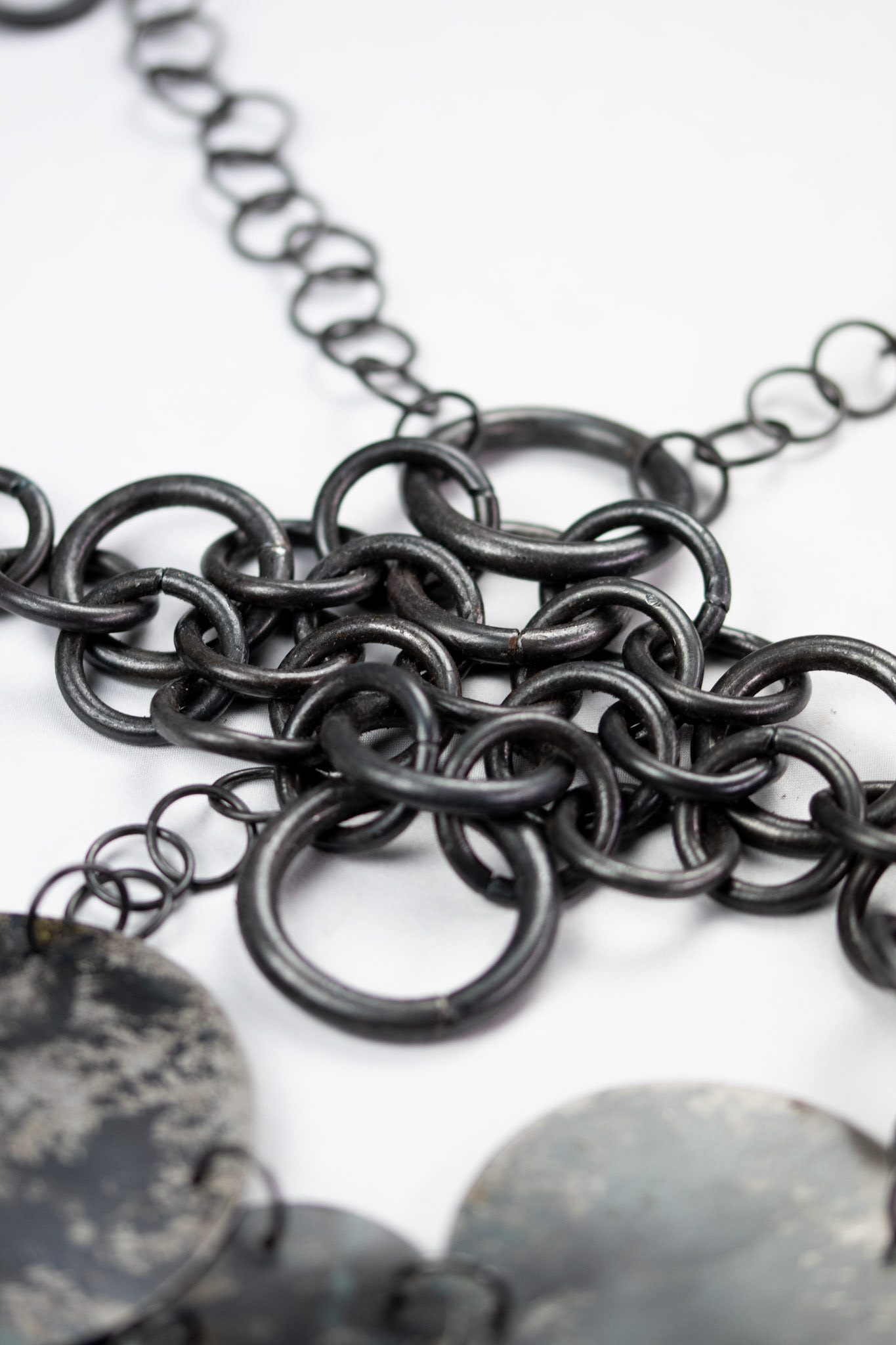

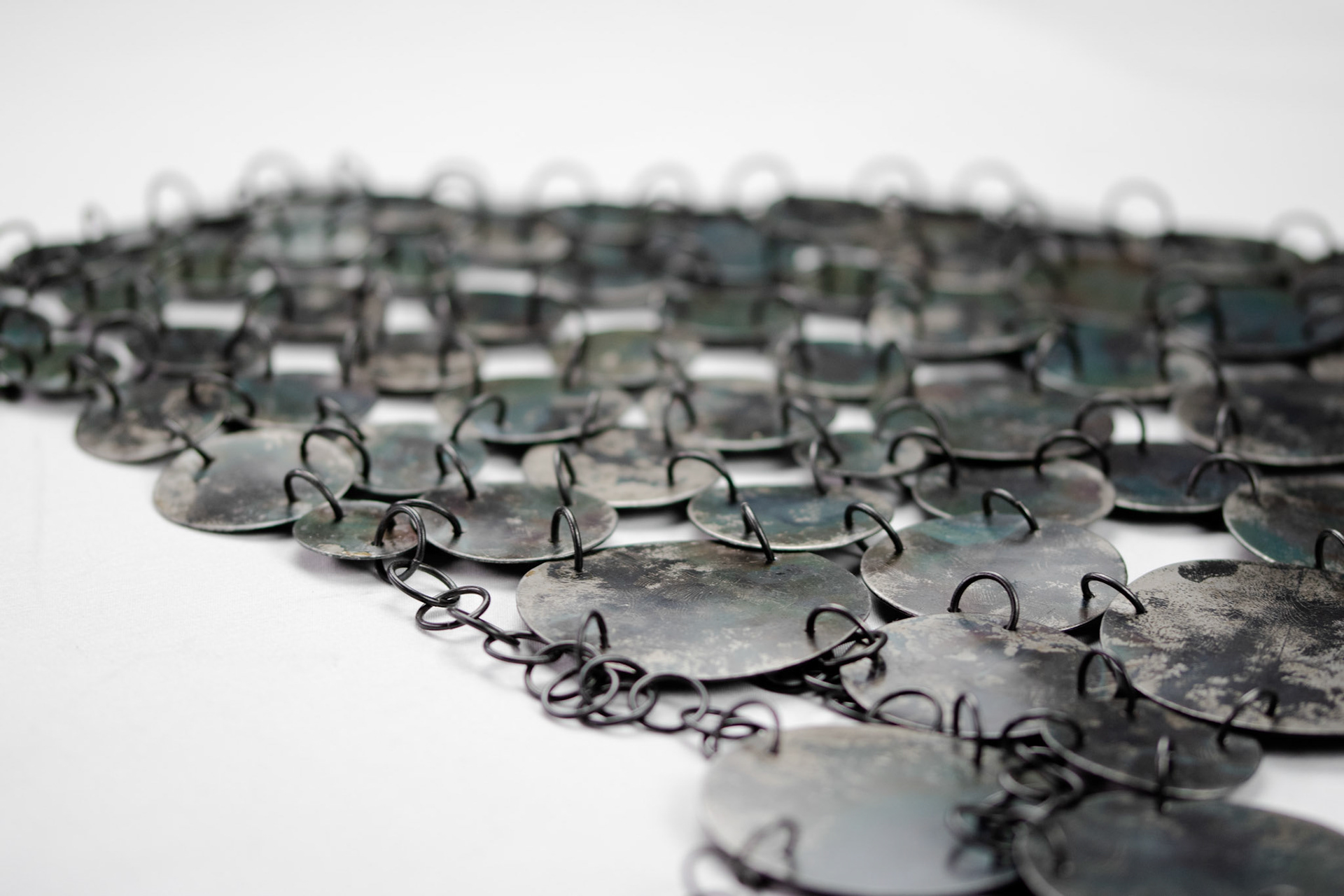
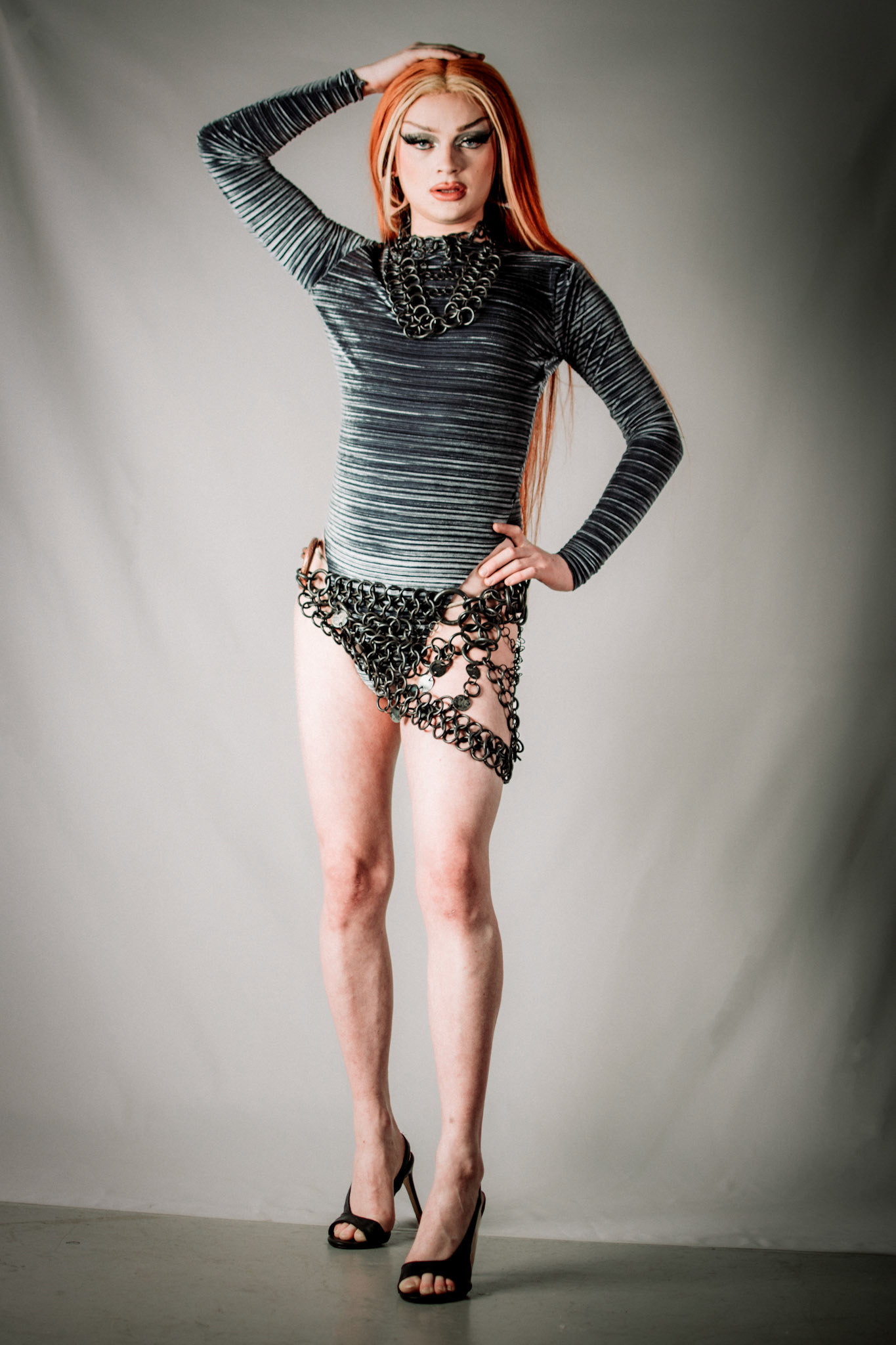

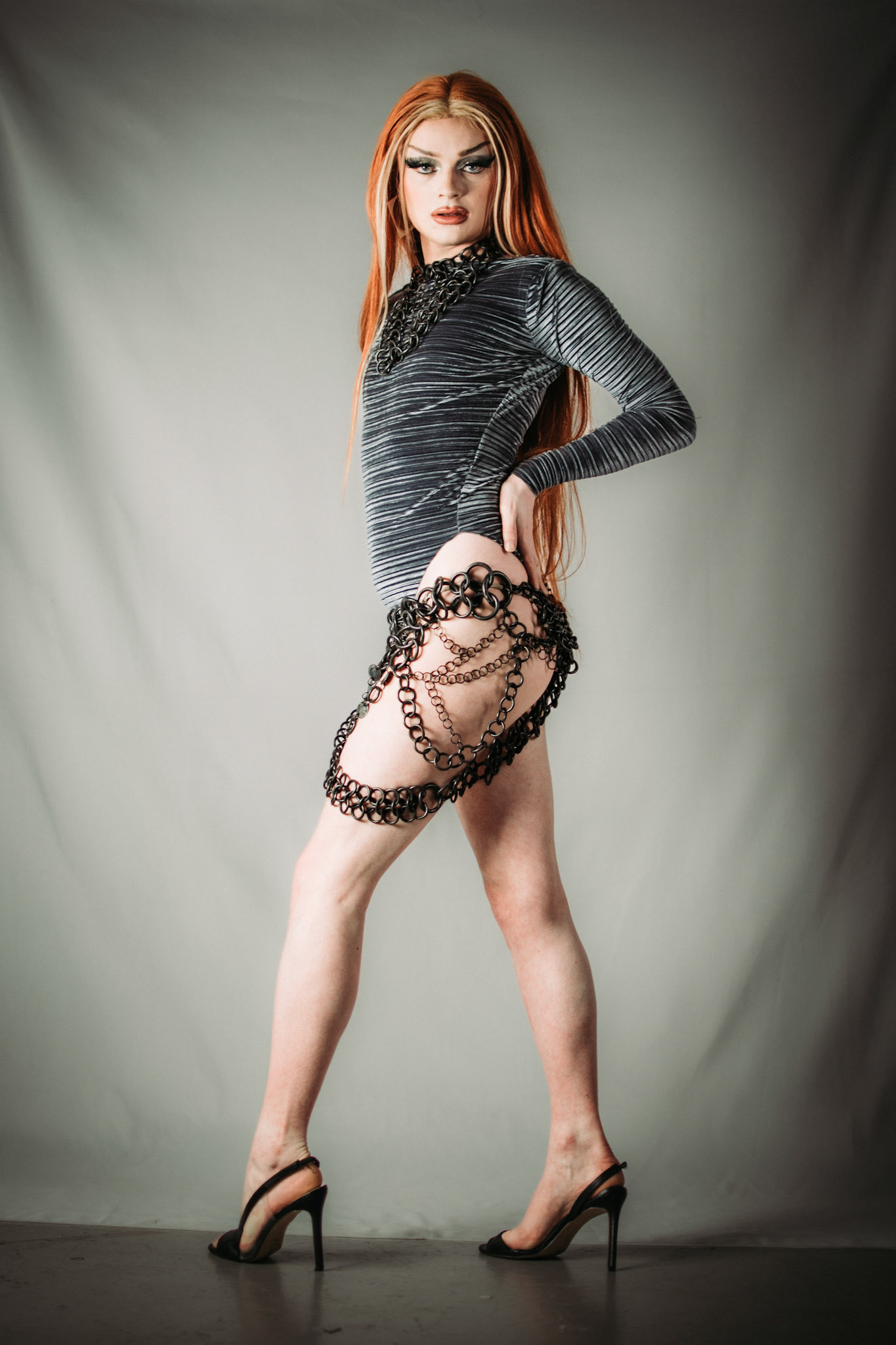

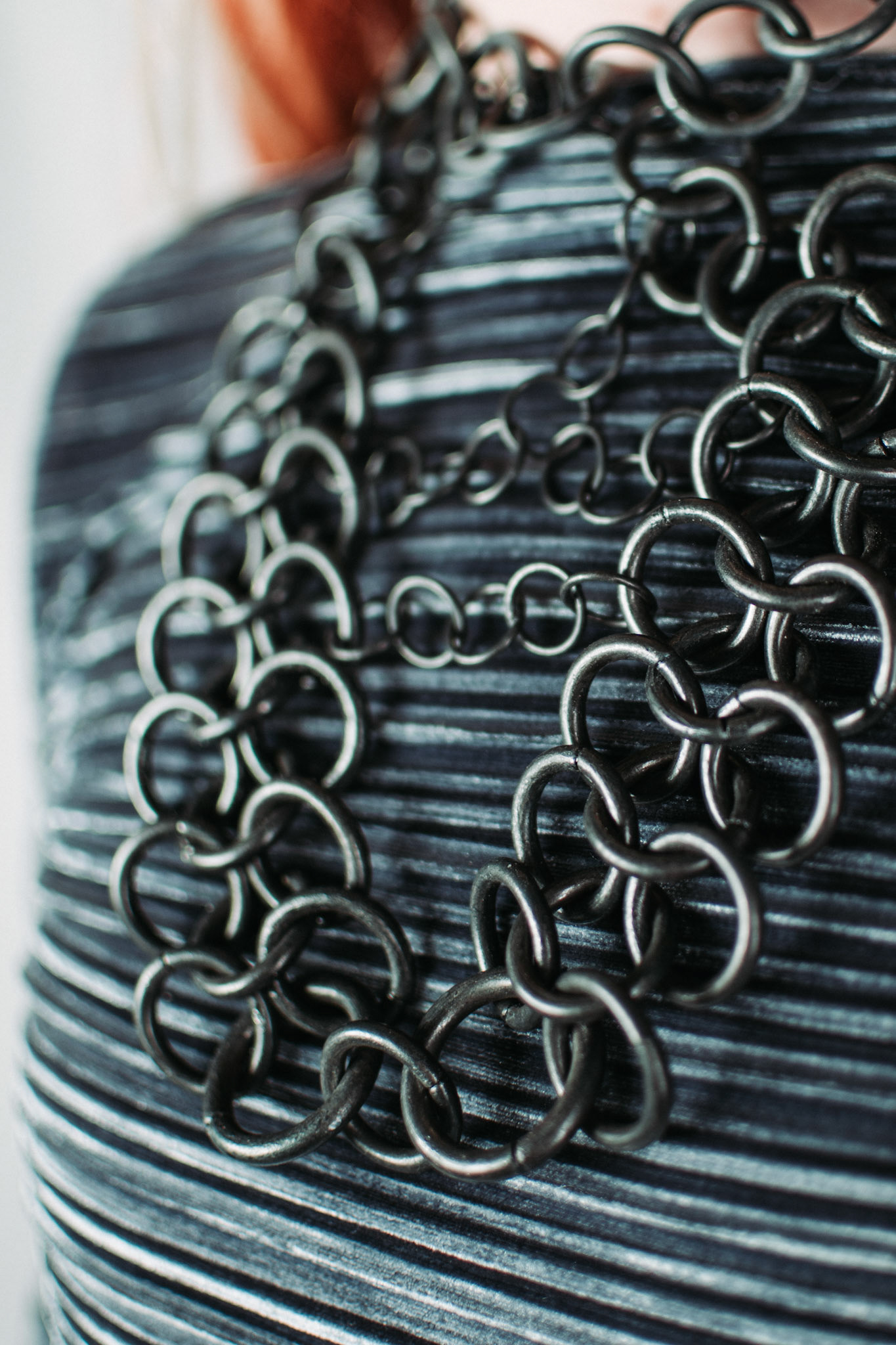



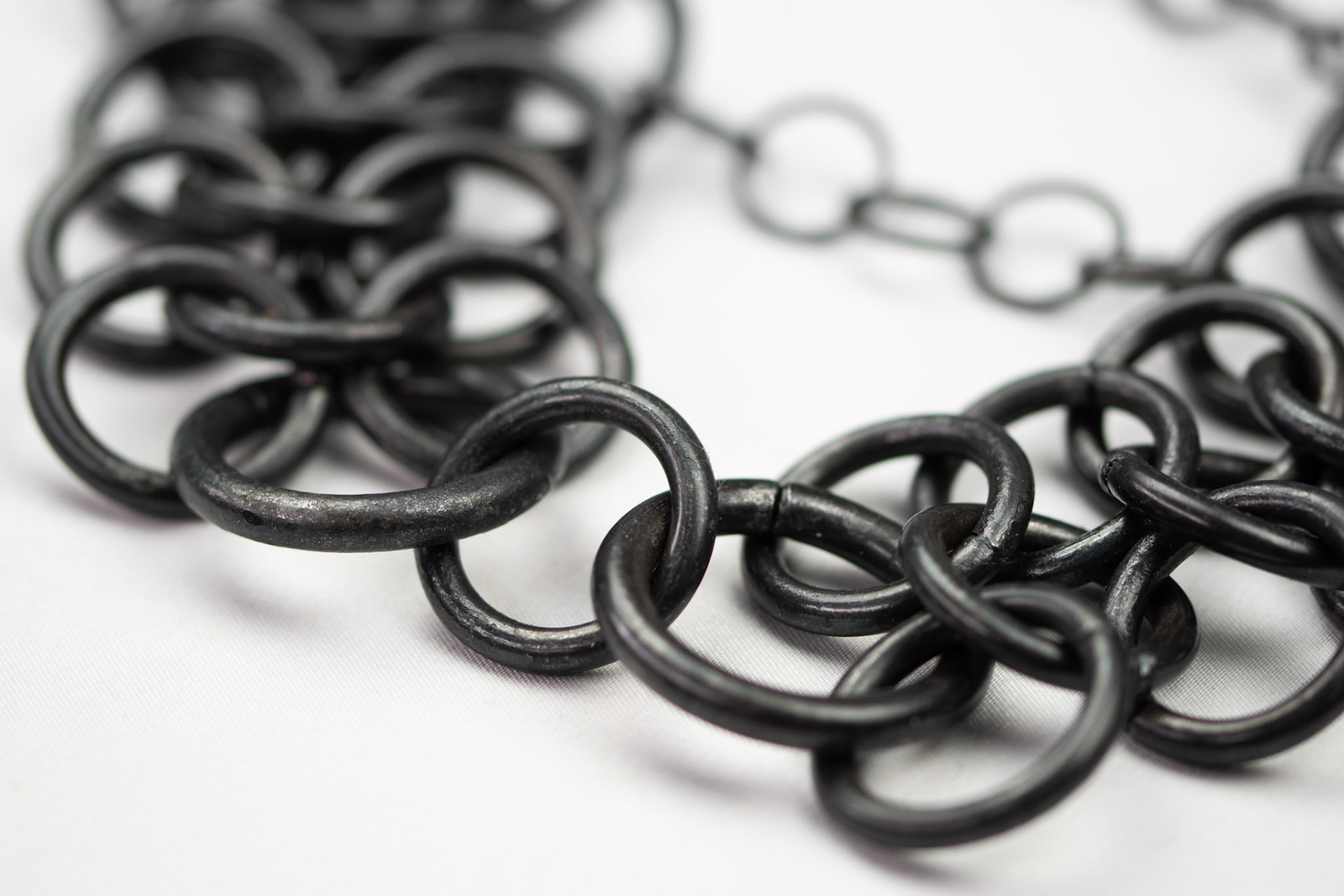


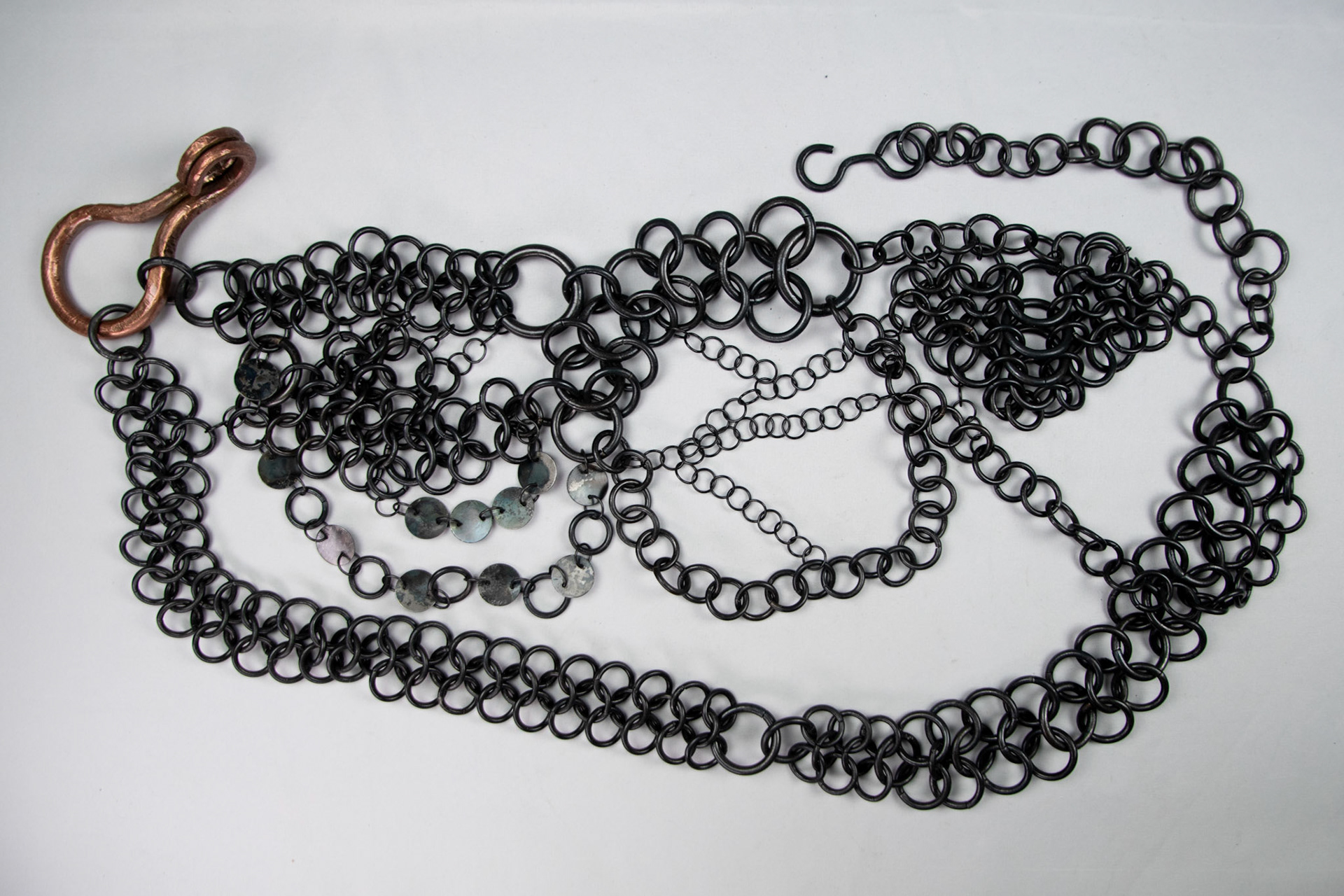

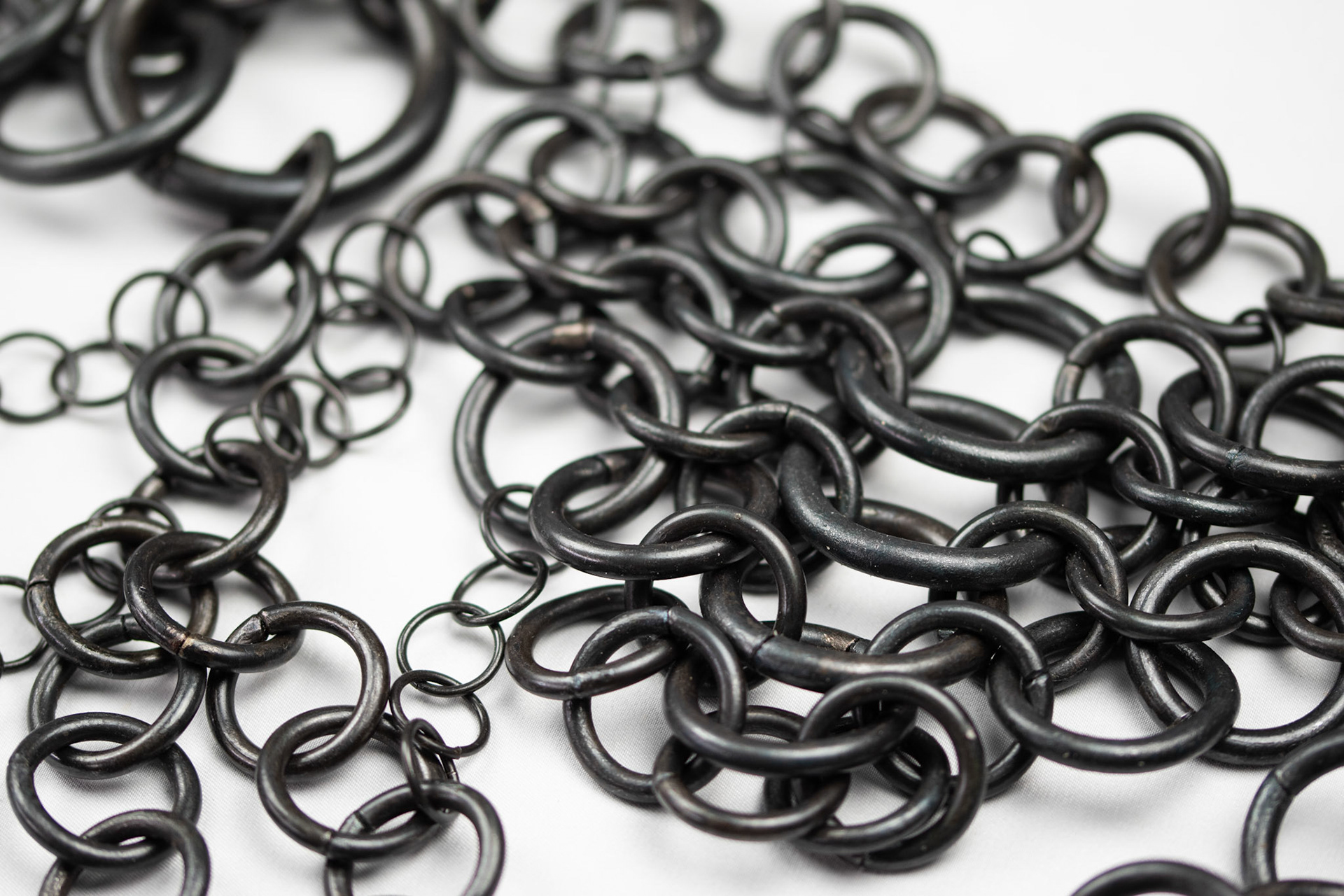


Reflection
Throughout this project, I explored the use of armour as a form of protection against society. Initially, I aimed to work with different areas of the body to address personal insecurities, vulnerabilities, and gender dysphoria. Additionally, I began reaching out to the wider community through collaboration to showcase both shared and personal lived experiences of transfeminine individuals.
I previously streamlined my workflow by following these steps: collaging directly over the body, modelling in cardboard, and then producing in steel. I felt confident in my ability to achieve the final outcome, as these skills were honed during Unit X. However, I wanted to improve my design work, to develop and refine my design language in order to better convey my narrative. Utilizing both the historical influence from my gallery visits and the personal insights acquired through the questionnaire, I was able to create more targeted collages. These led into my cardboard modelling, where I dedicated significant time to experimenting with different patterns and forms. I explored interlocking variously sized links to play with transparency, adjusting levels of concealment over different areas of the body. Additionally, I sought to create designs that interacted with the body and shaped the viewer’s perception, I used leading lines and fluid forms to enhance the hourglass figure.
This systematic approach helped me deliver a consistent collection. However, it also limited my creativity and willingness to experiment with different manufacturing techniques. I found that making various clasps across the collection allowed me to break free from these restraints slightly. In the future, I believe I need to allow myself time to play and sample without the pressure of producing a finished outcome. Looking ahead, I plan to continue developing this collection during my MA, keeping this experimental approach in mind to introduce new ideas and possibilities.
During this project, collaboration was key. The questionnaire informed my design intentions, while the final pieces showcased the power to overcome the described insecurities. I believe this approach effectively displayed the breadth and nuances of the struggles with gender dysphoria that the trans community experiences.
The project took a different direction than I originally proposed. The pieces became vehicles for overcoming gender dysphoria, granting the wearer greater power and control over the perception of their body. The collection no longer needed to protect individuals; instead, it helped them express their identity.

